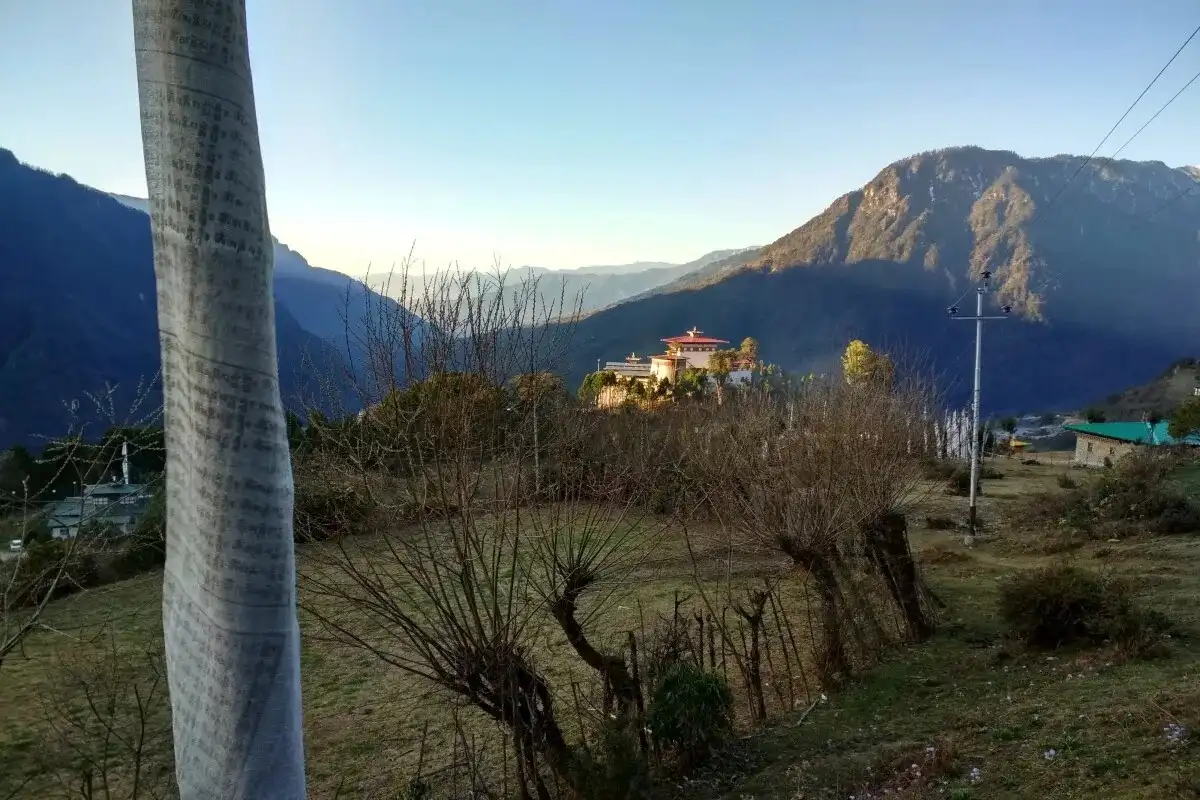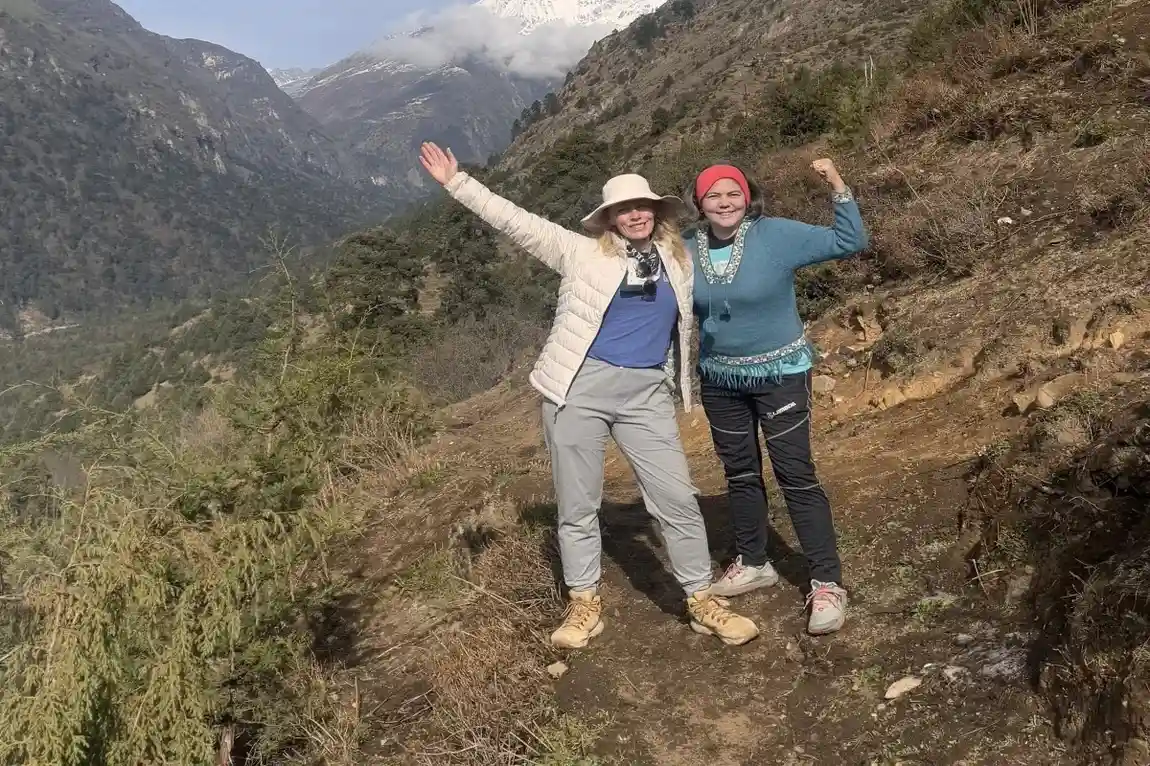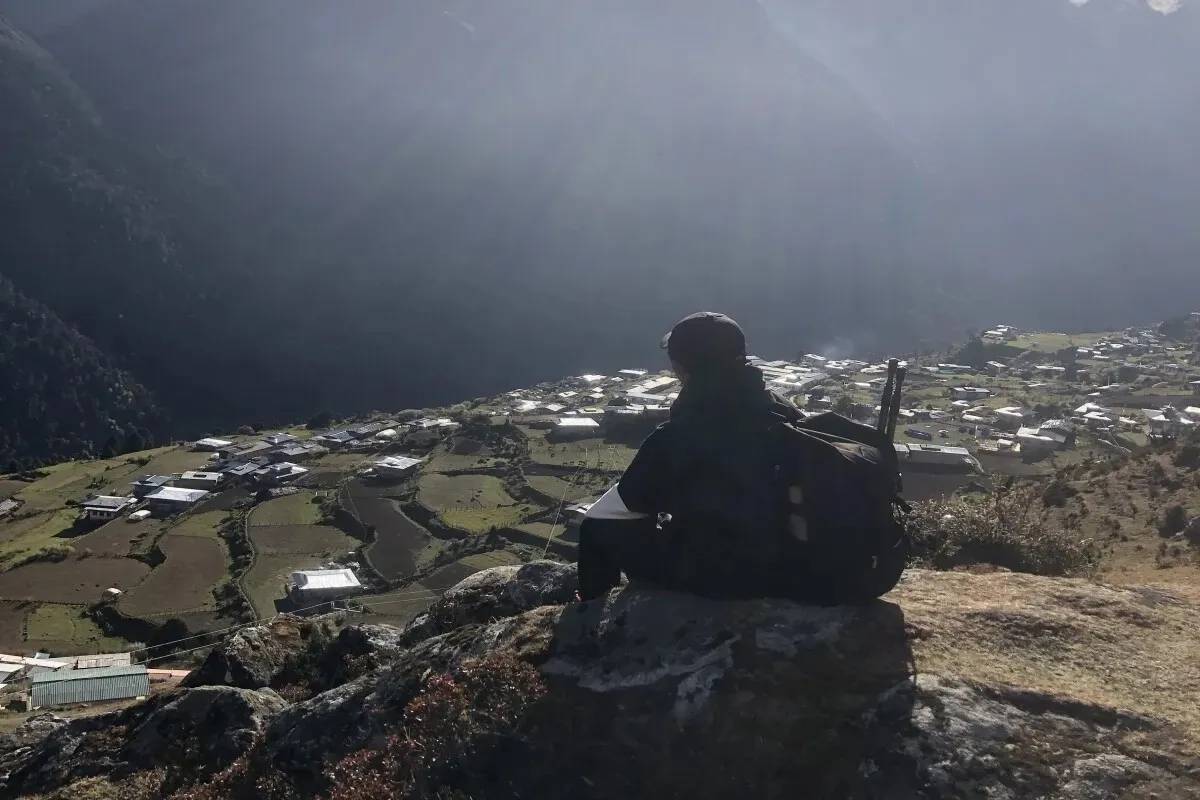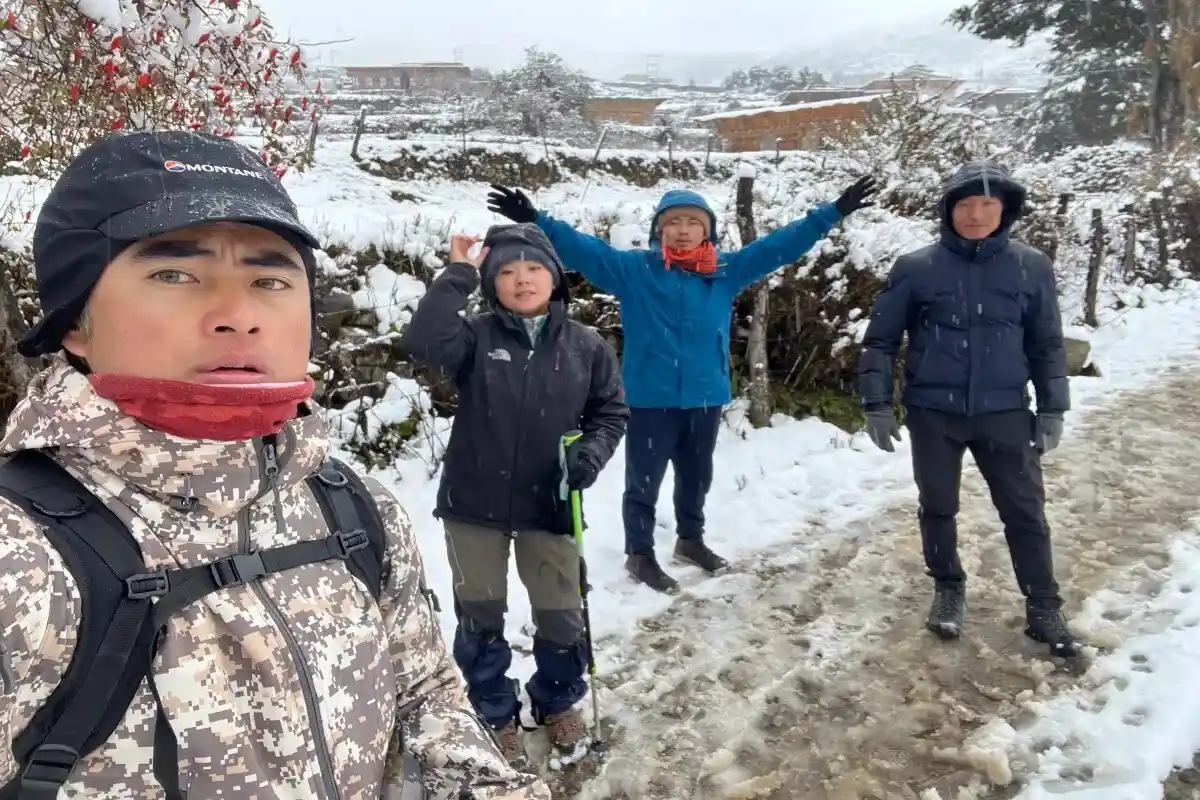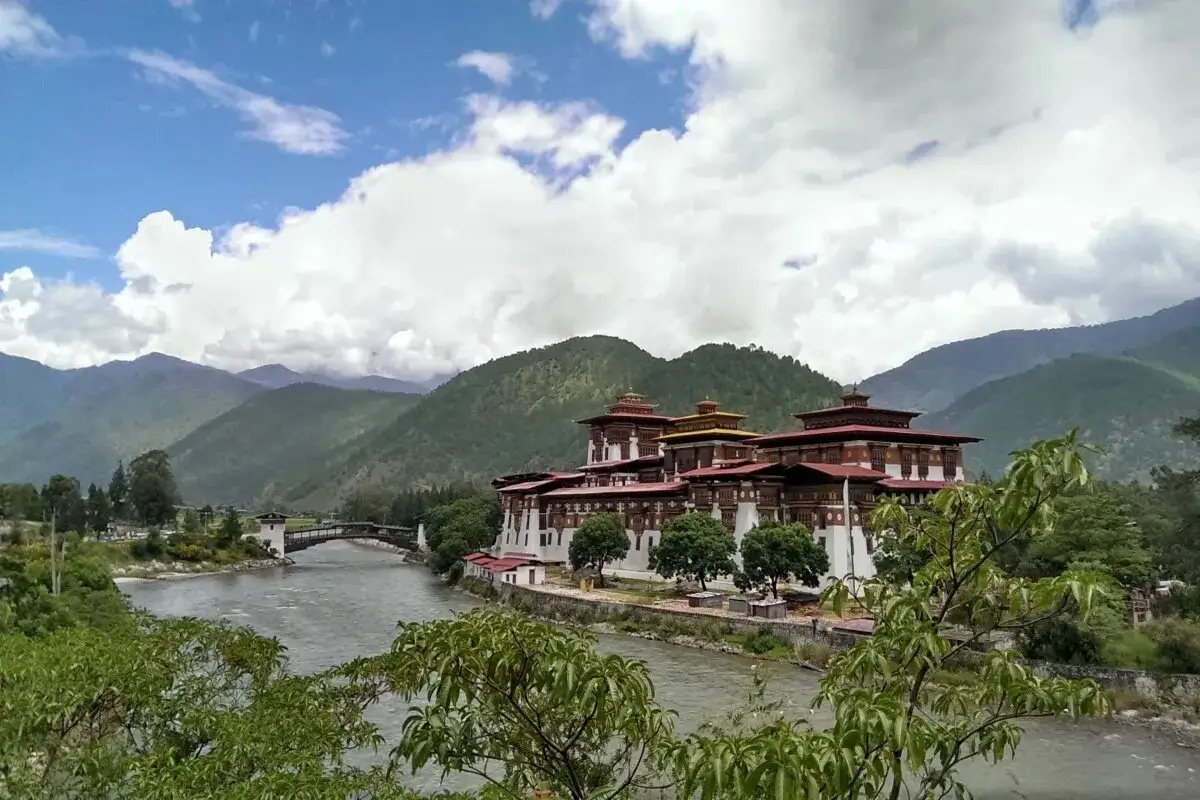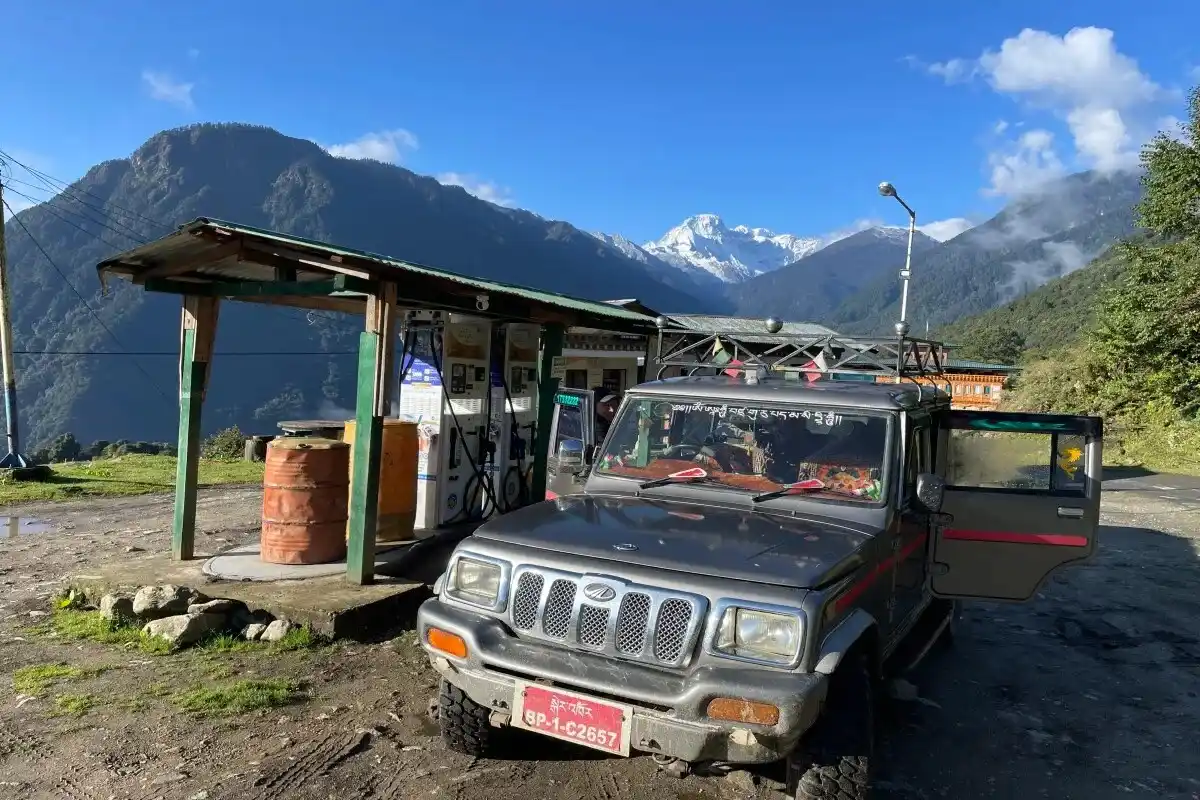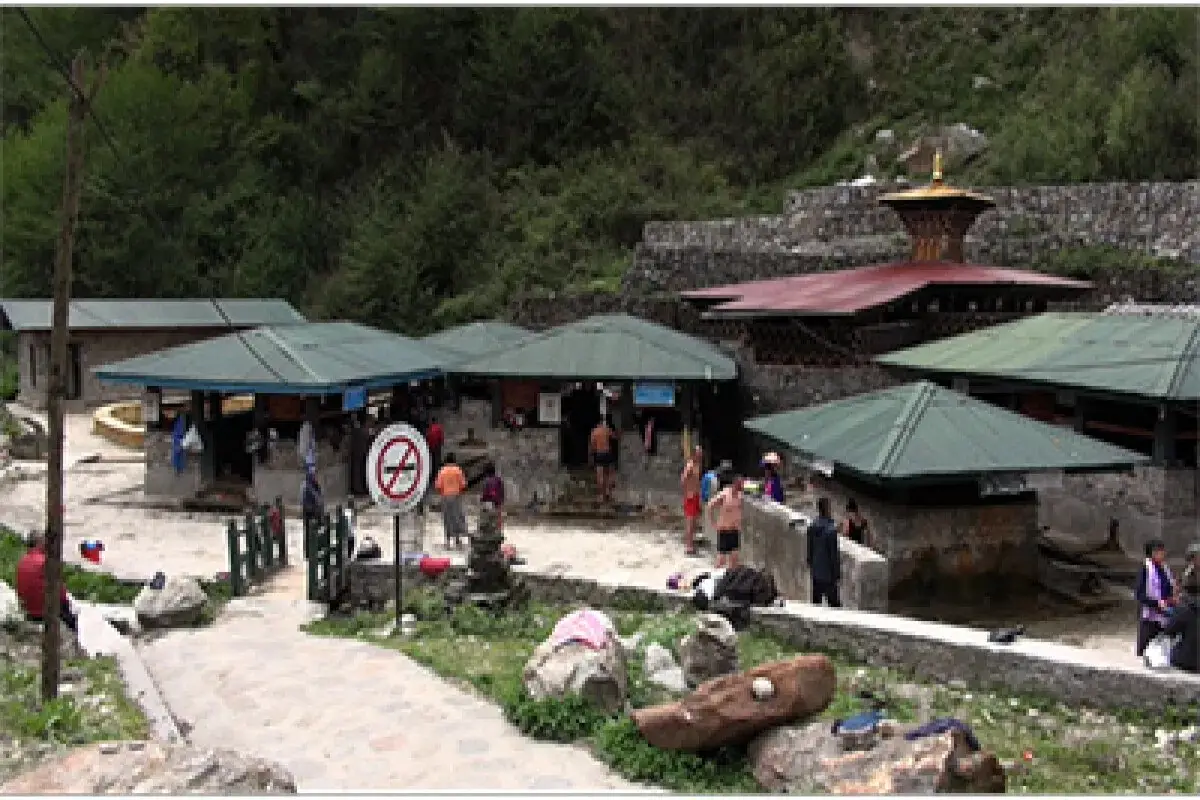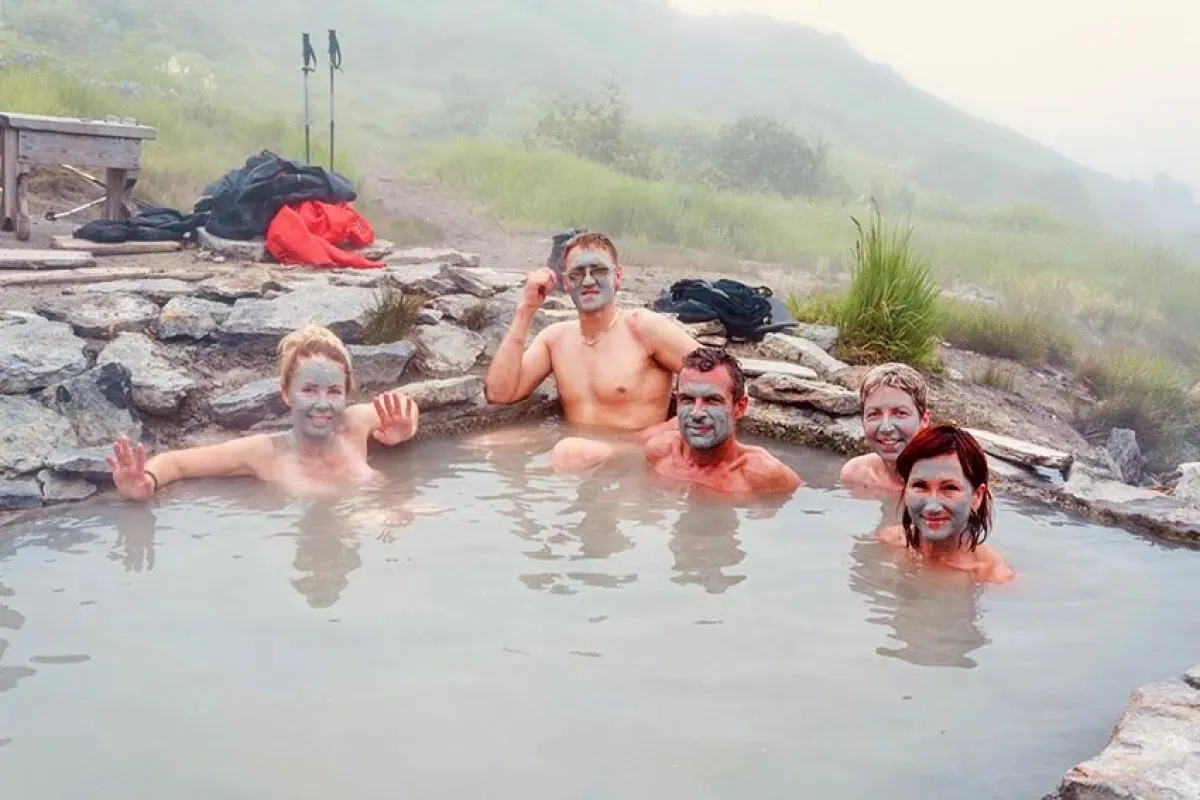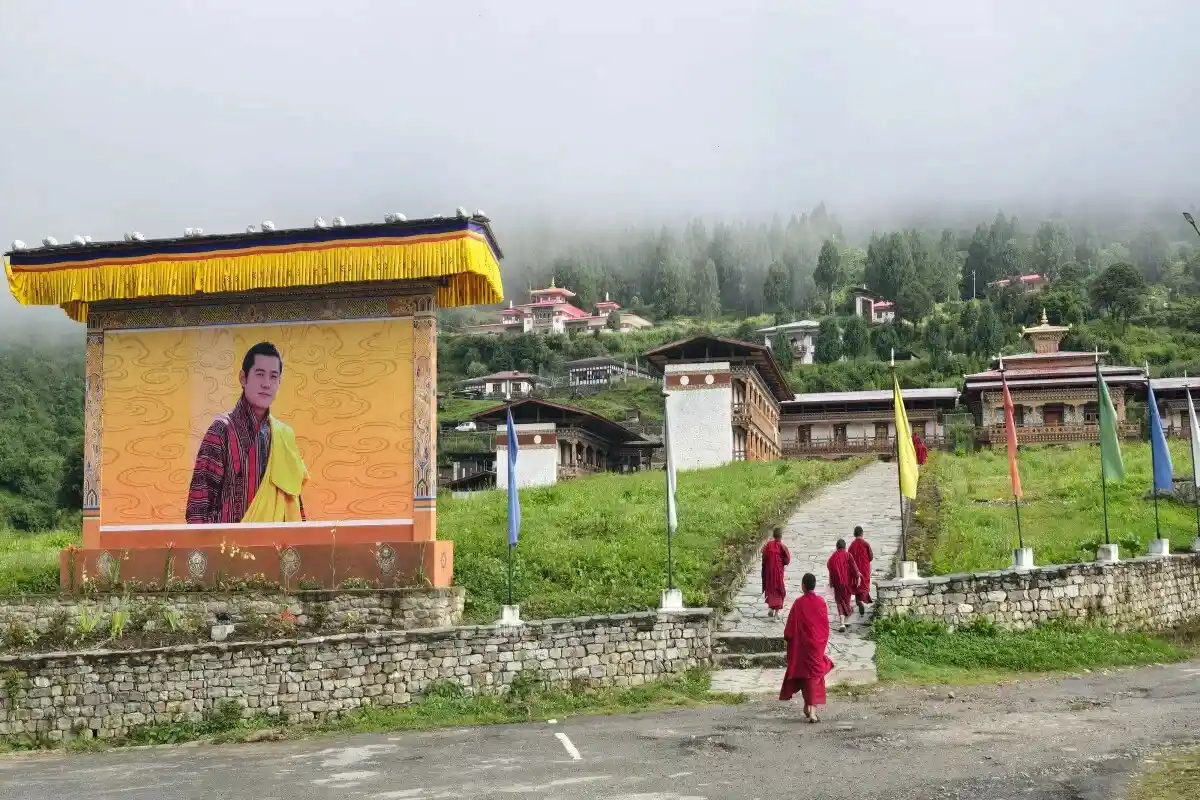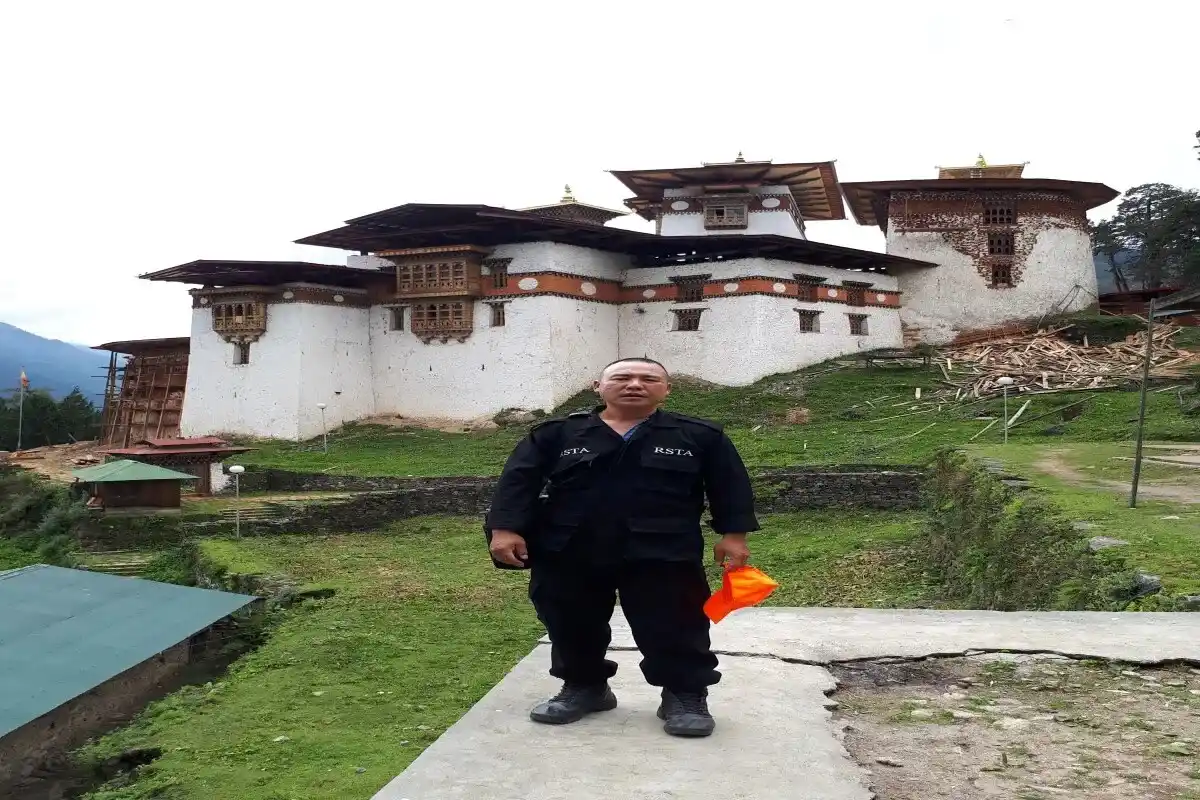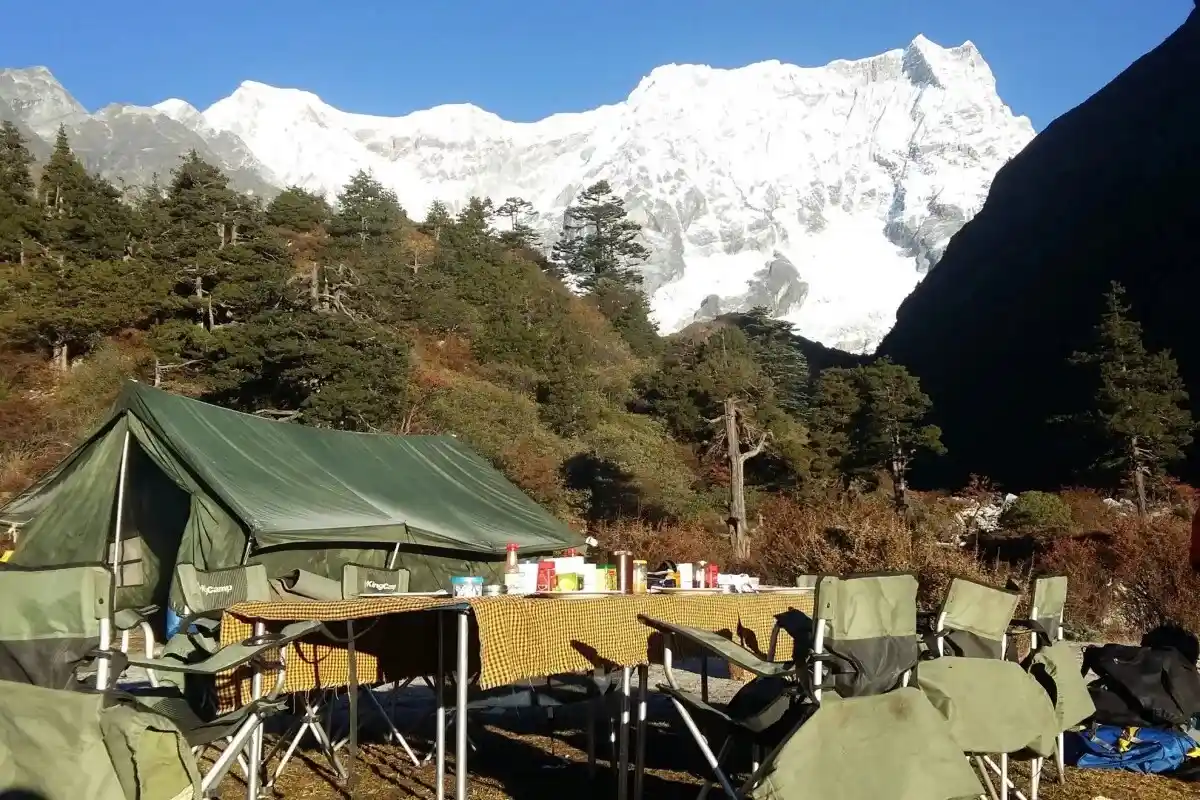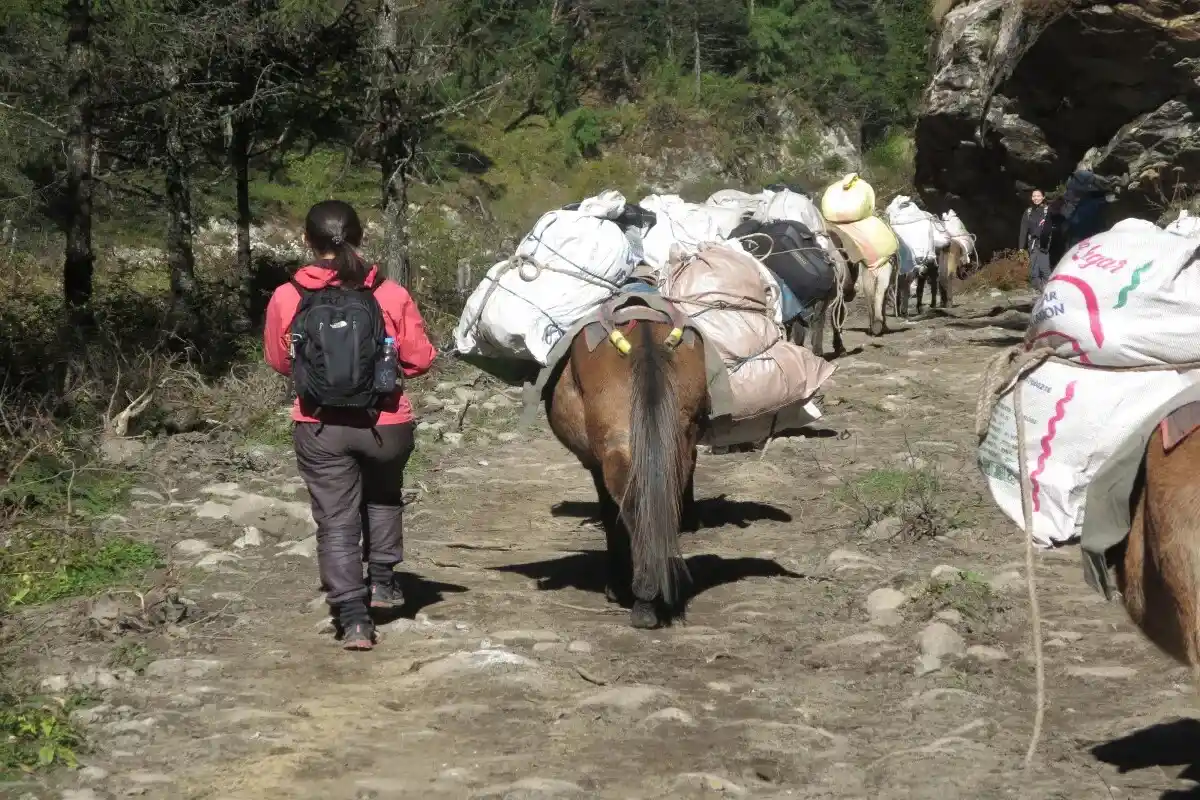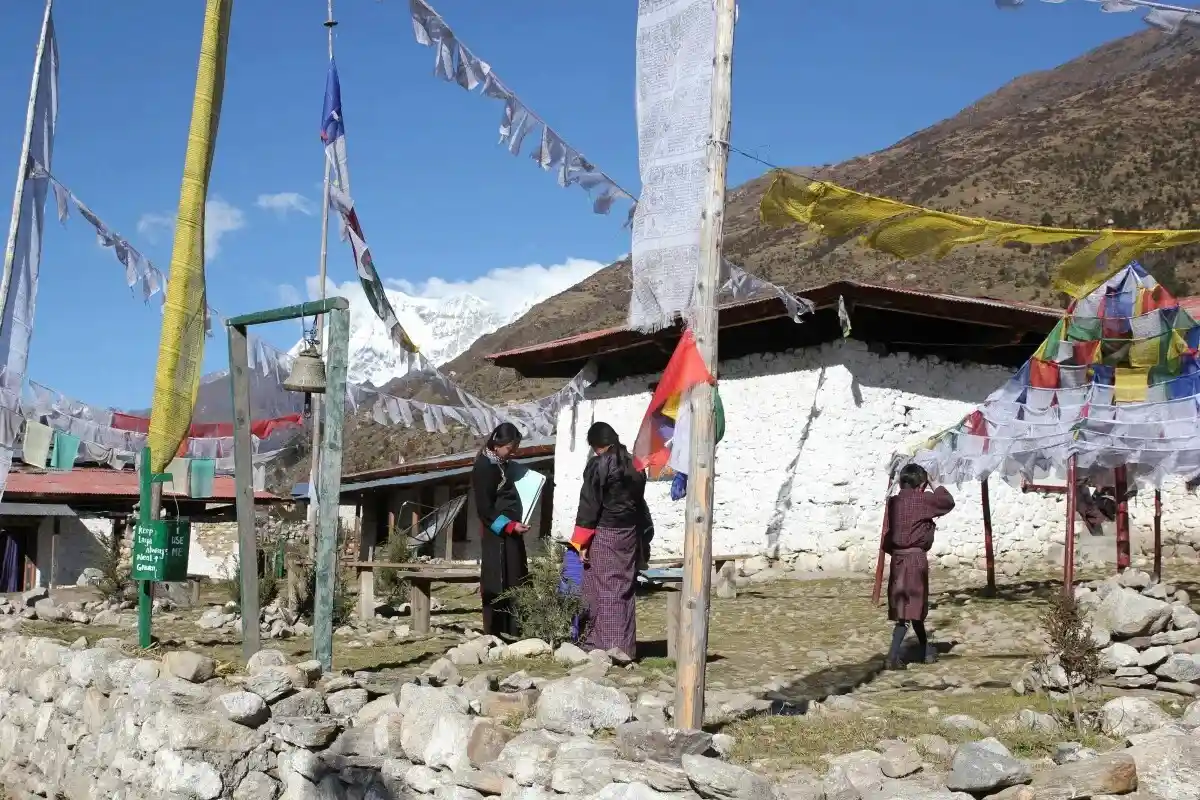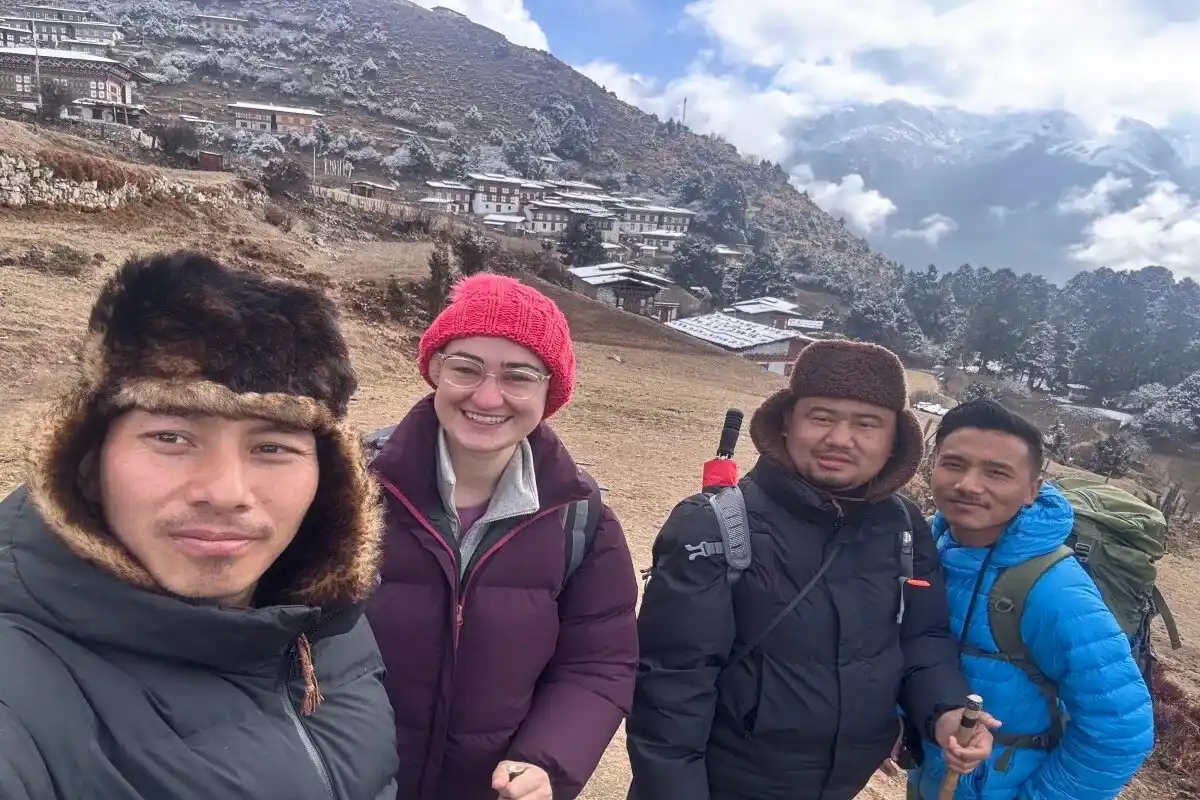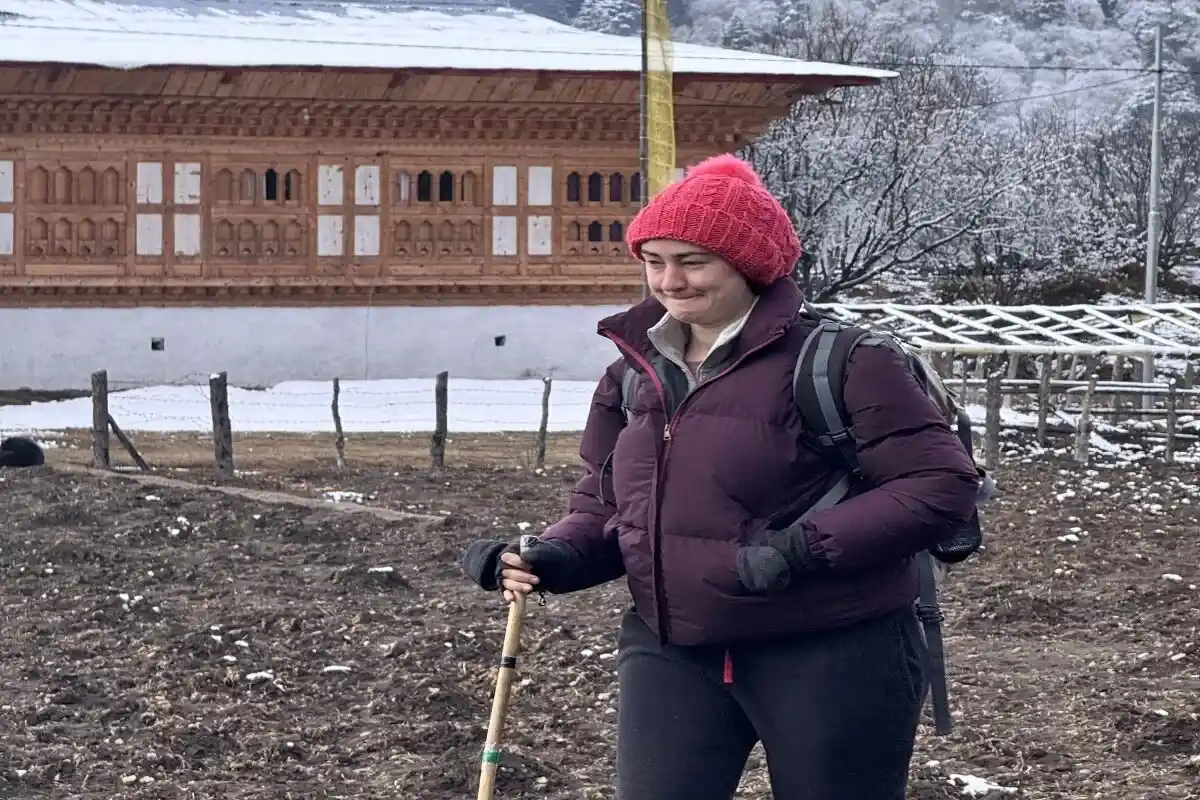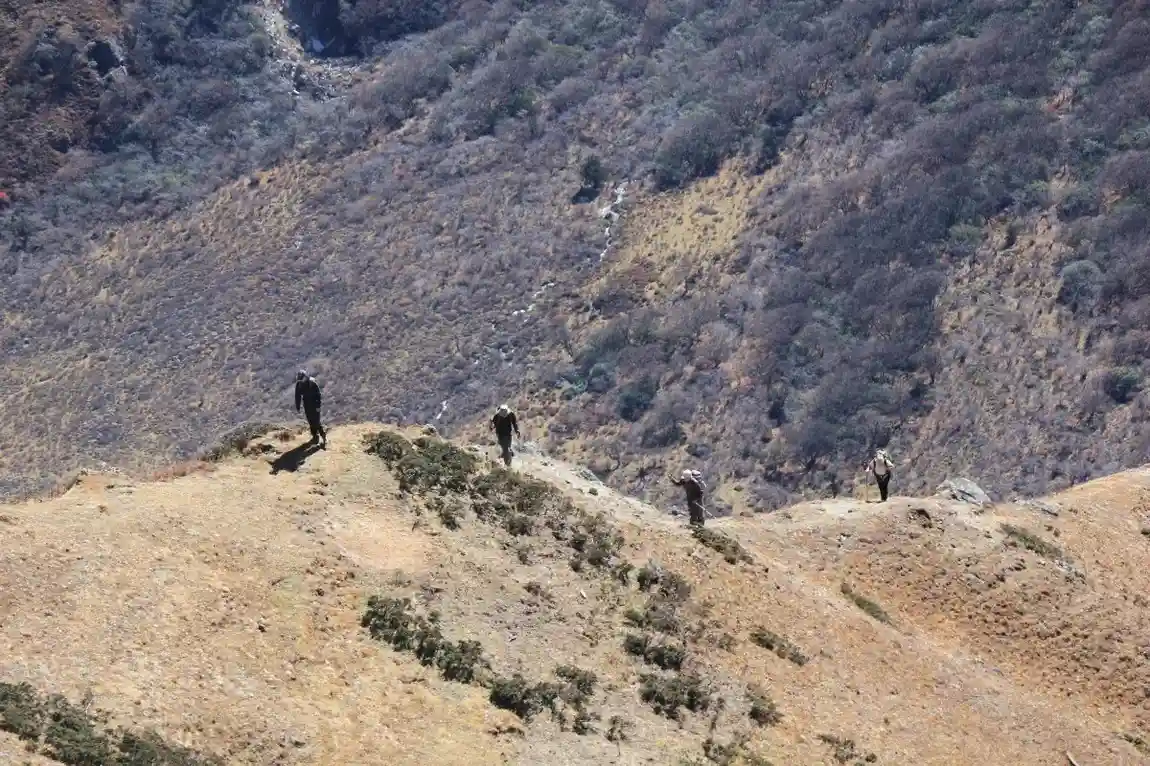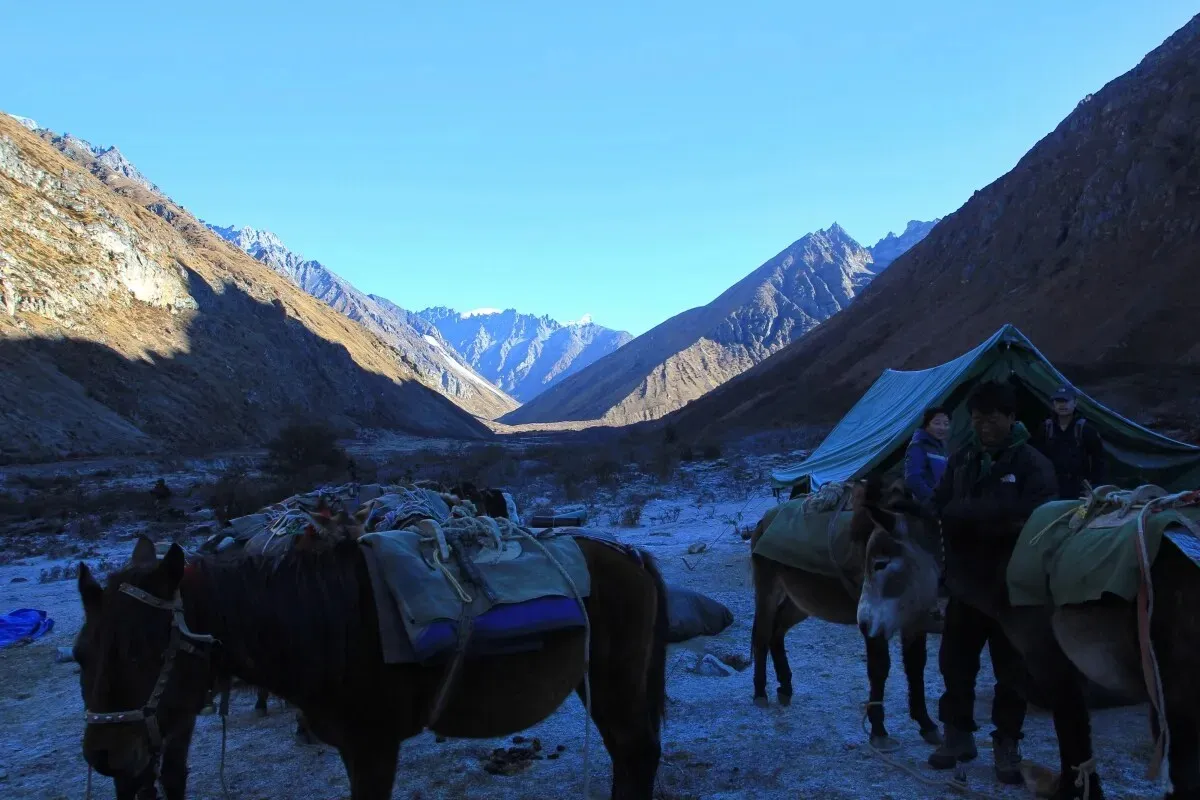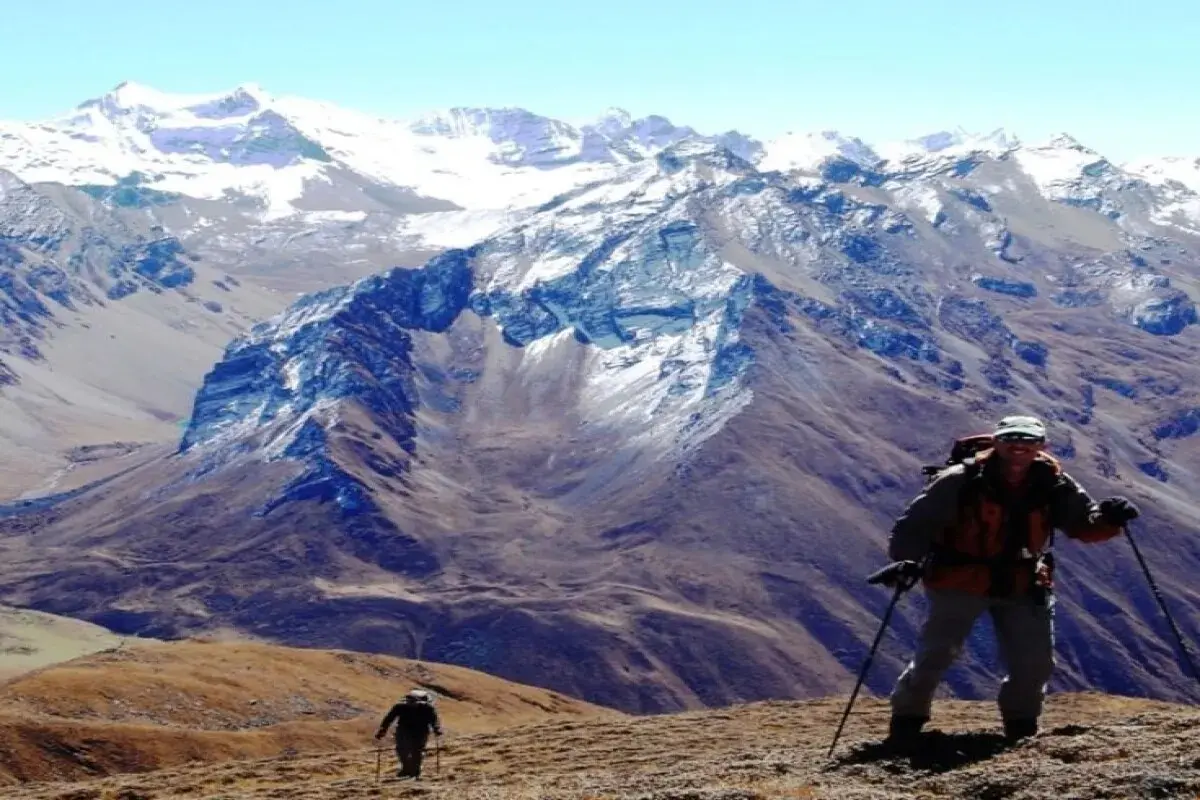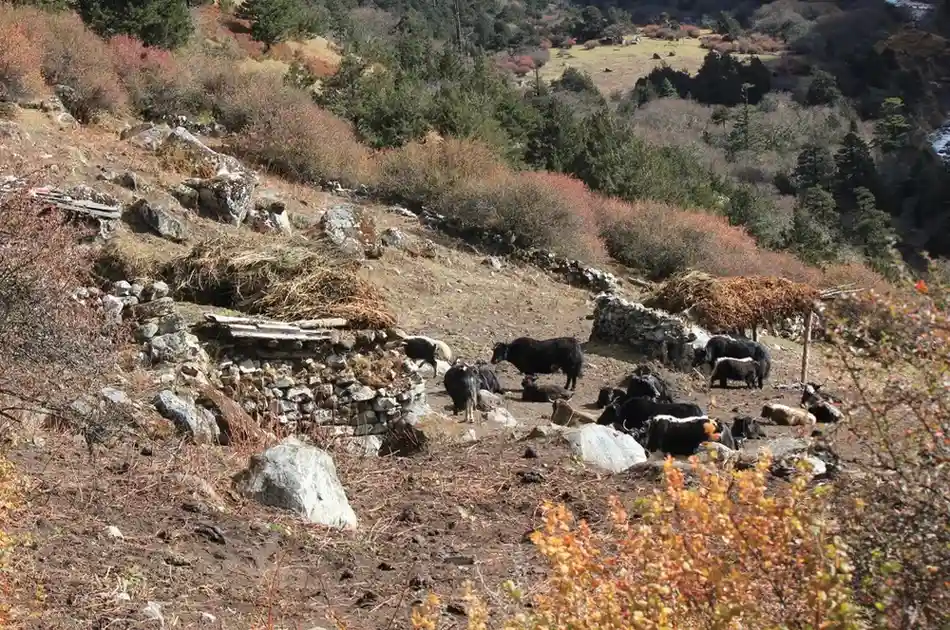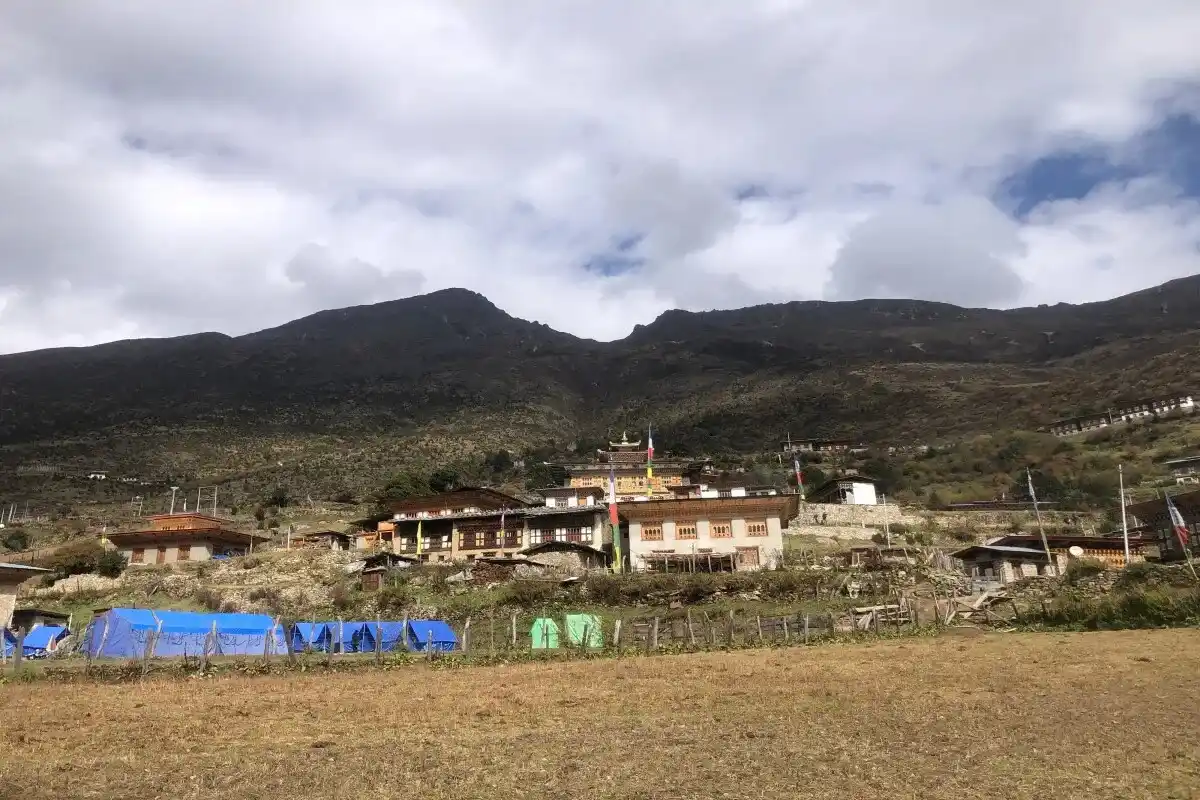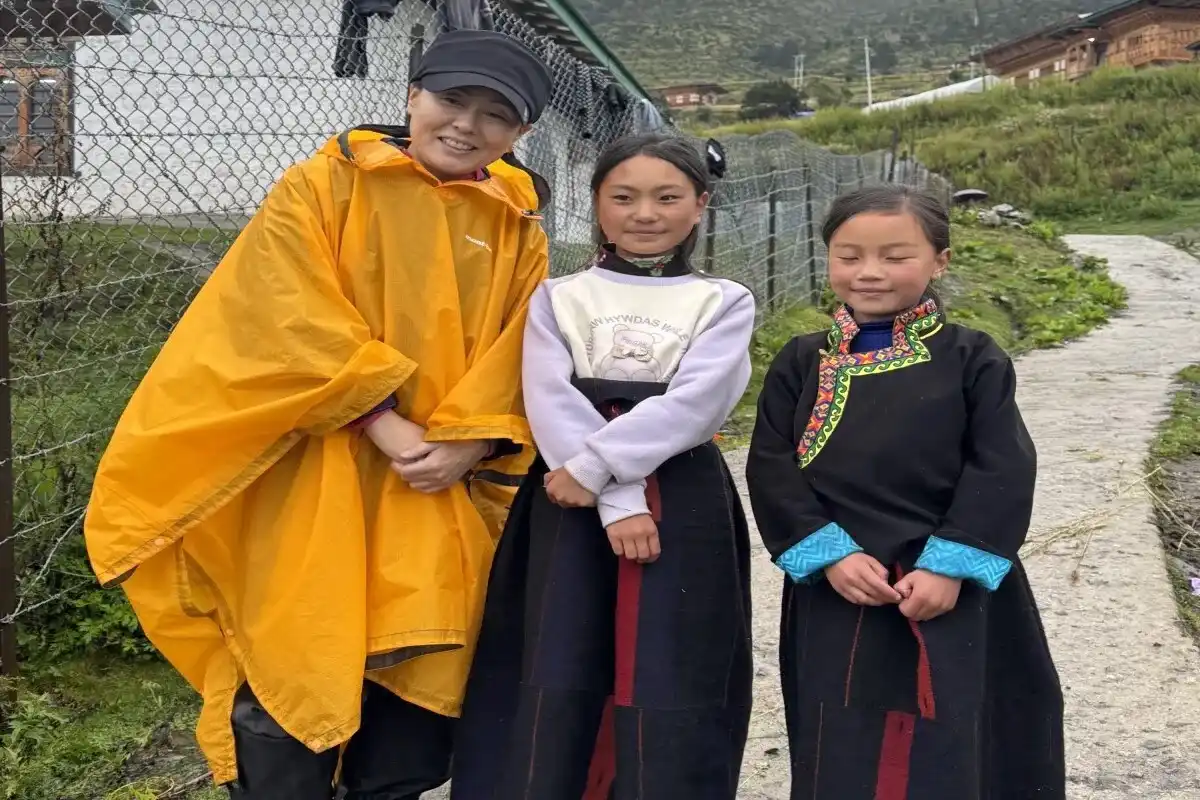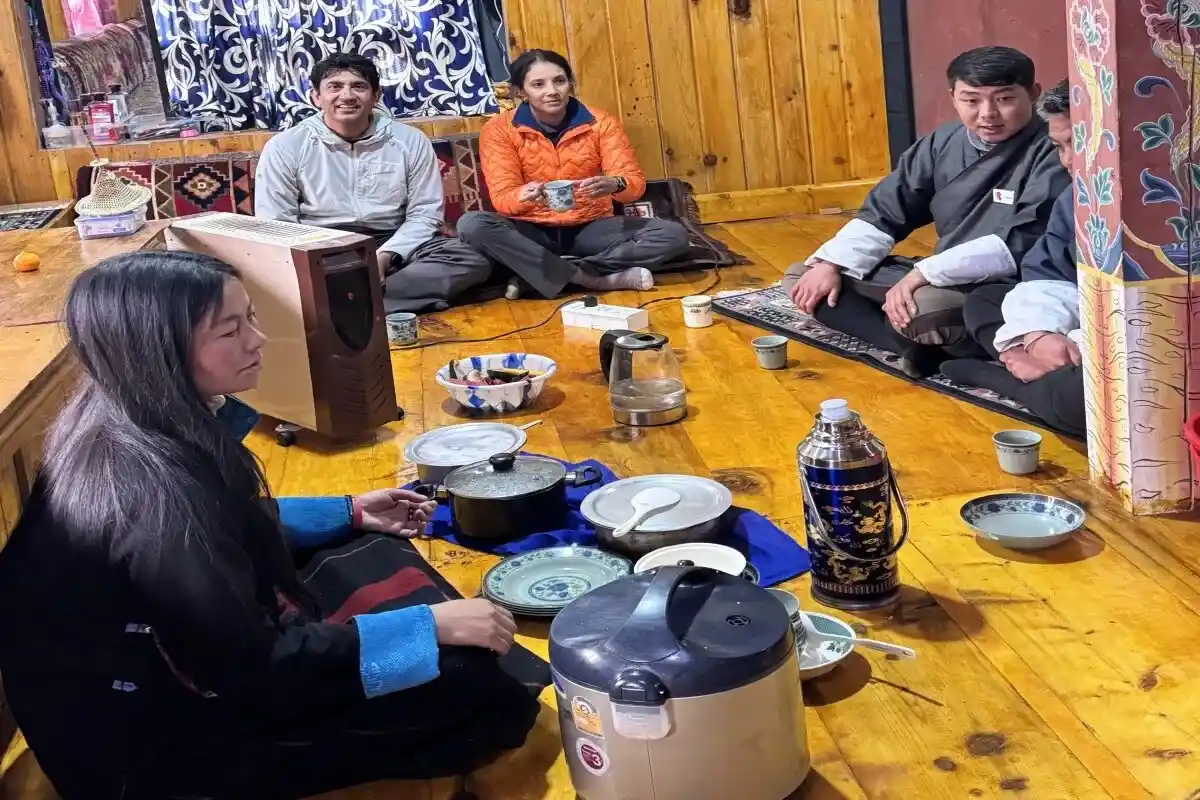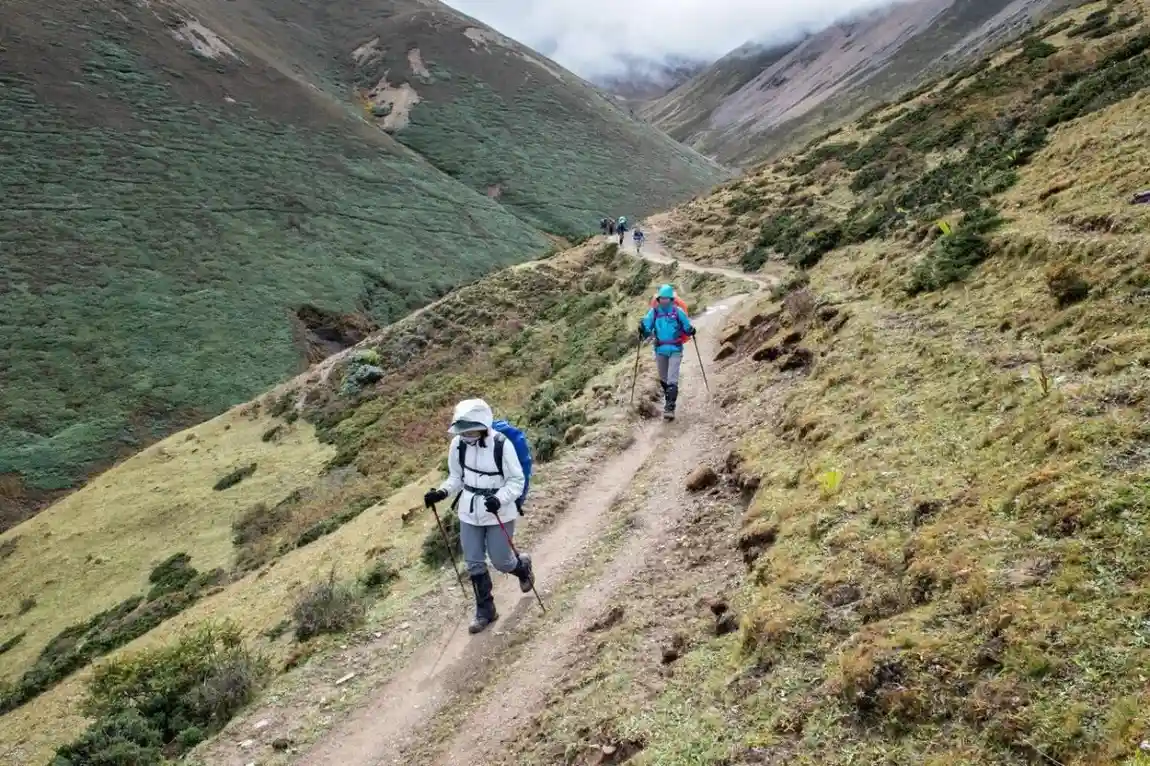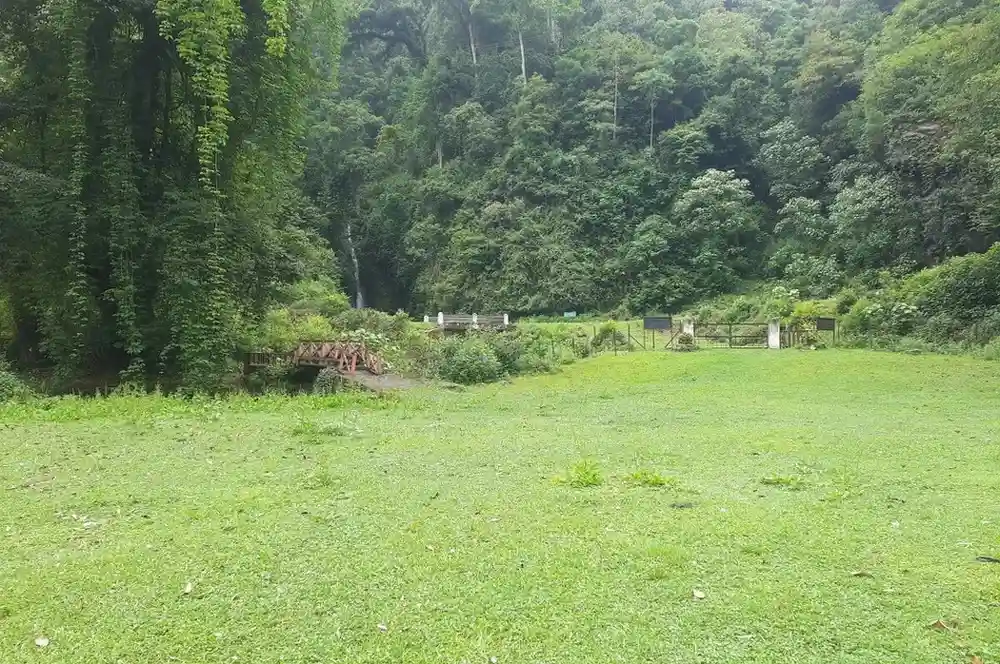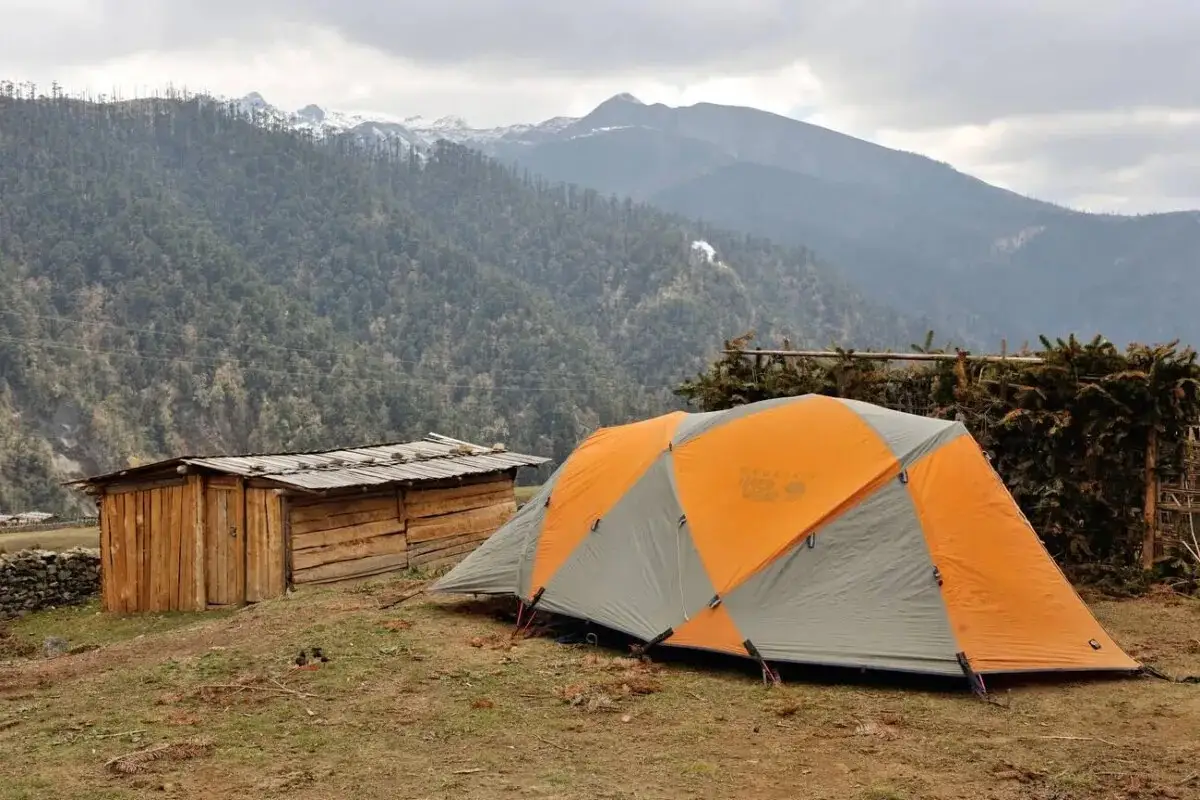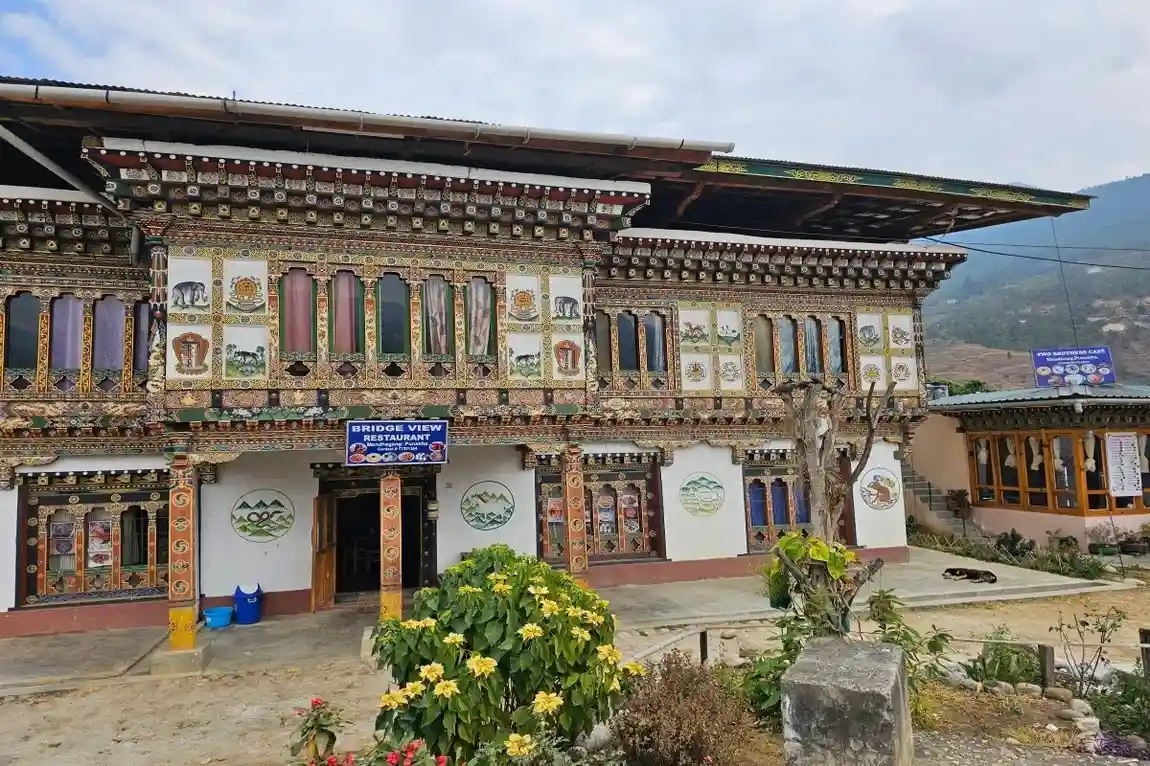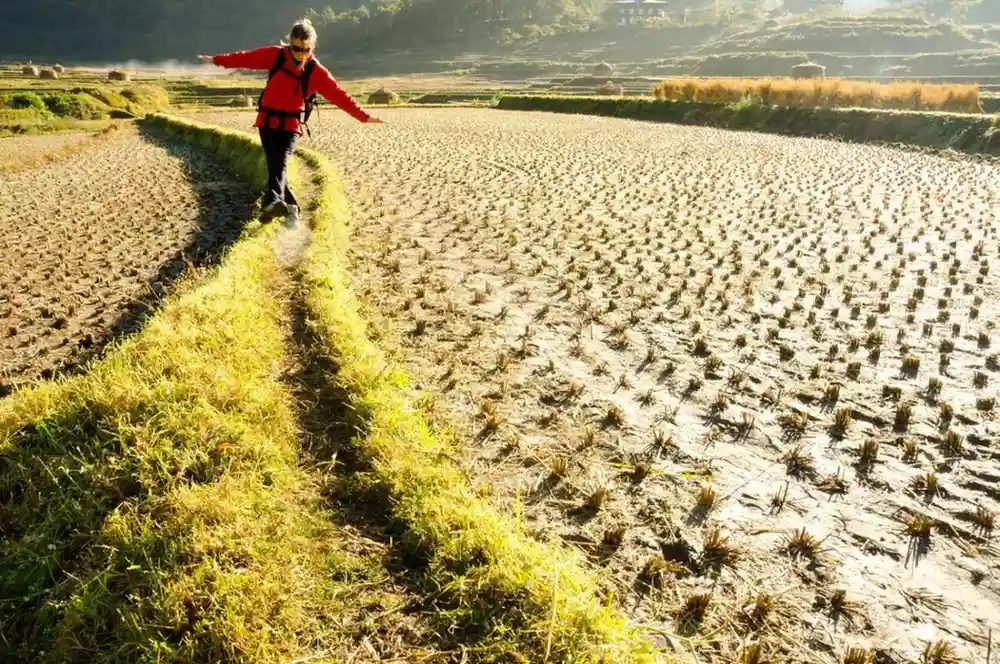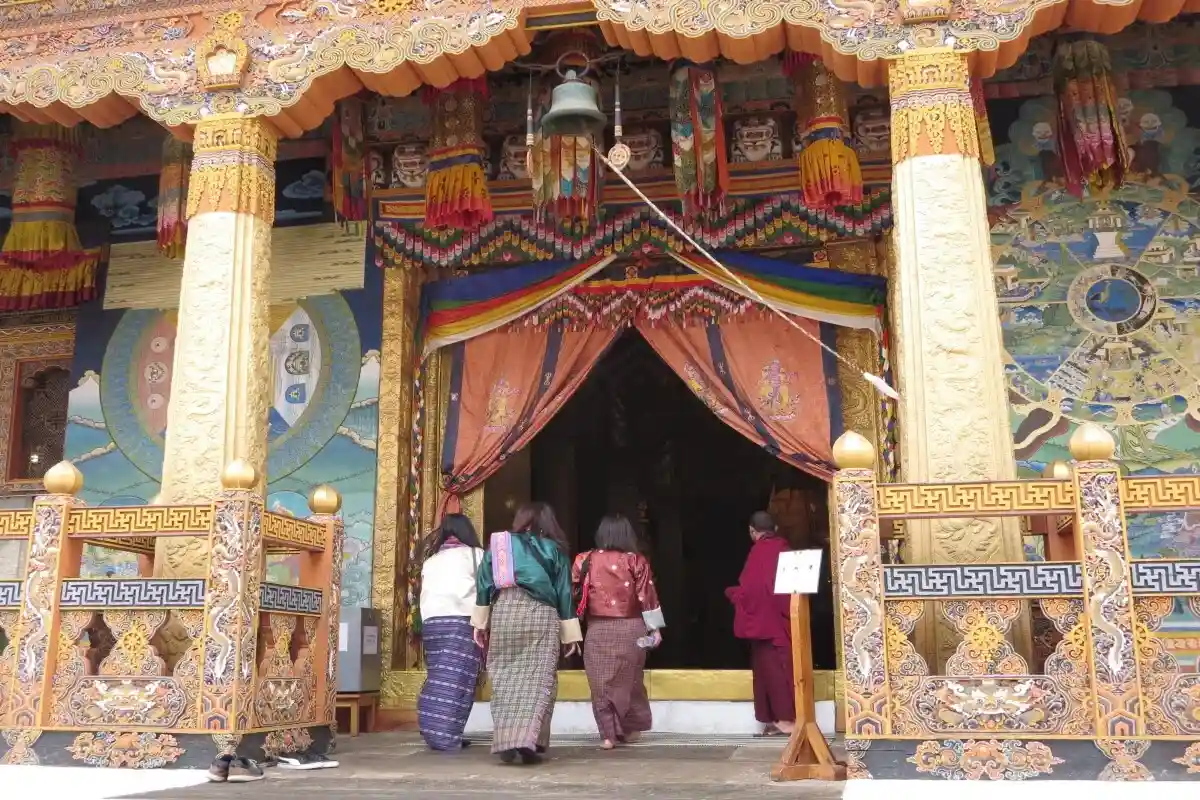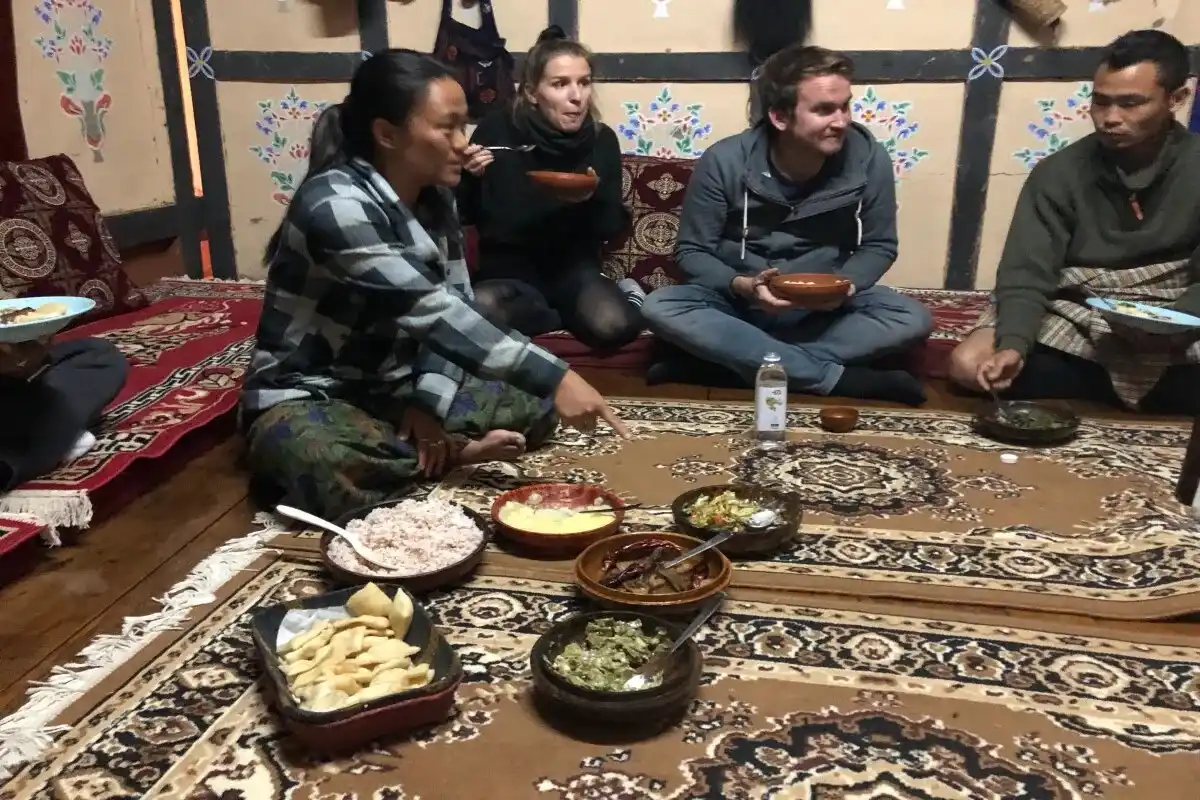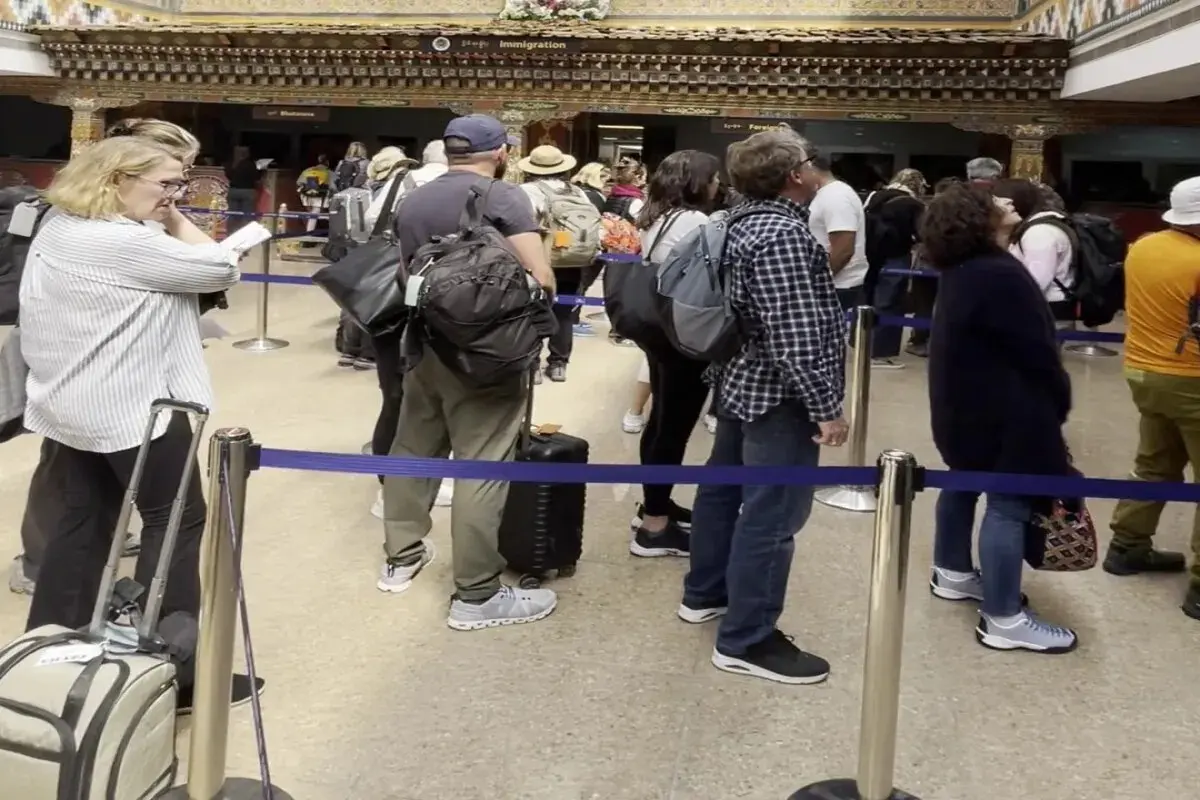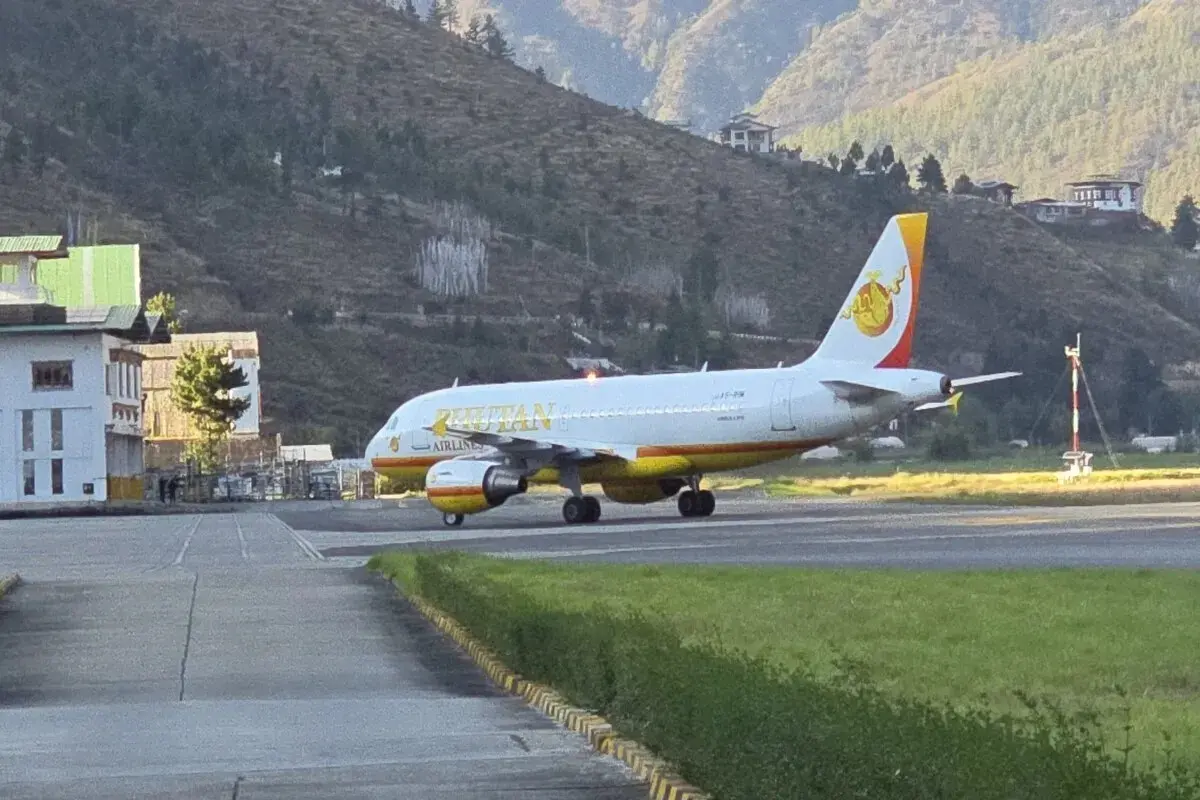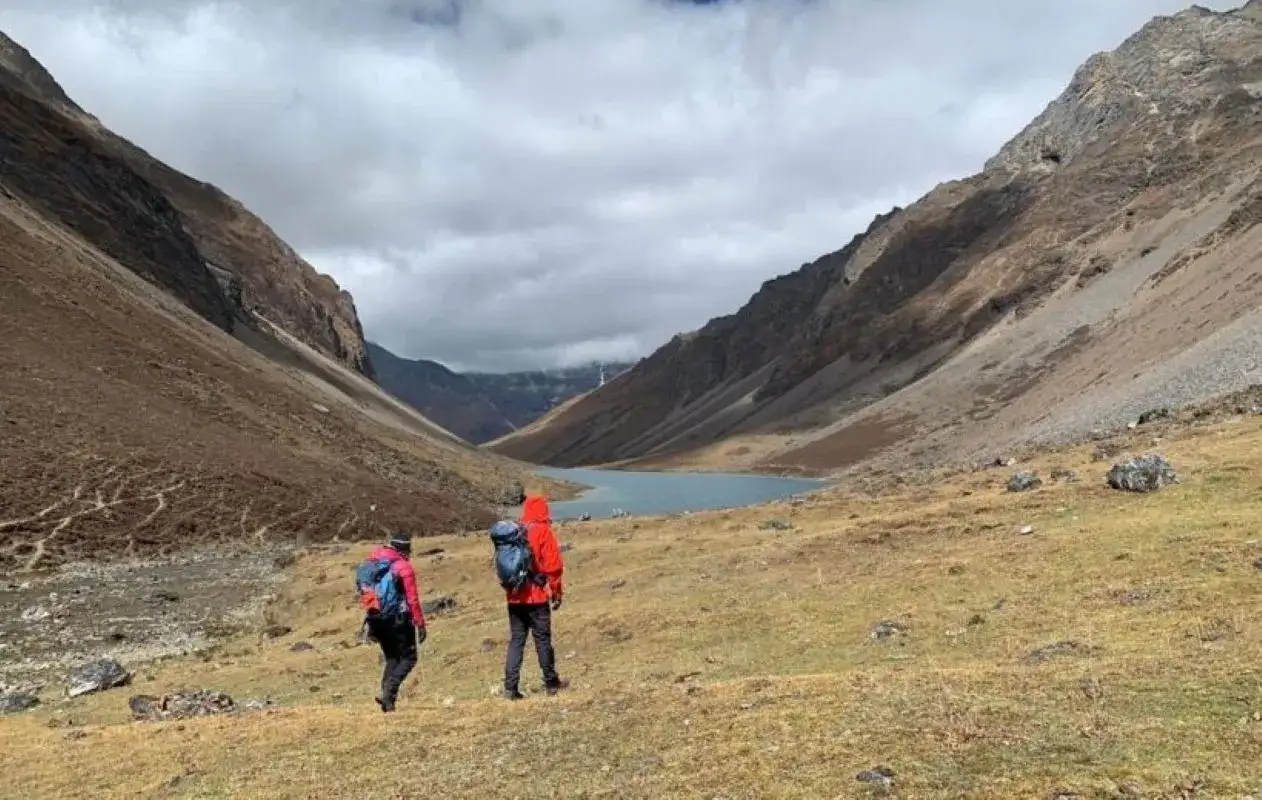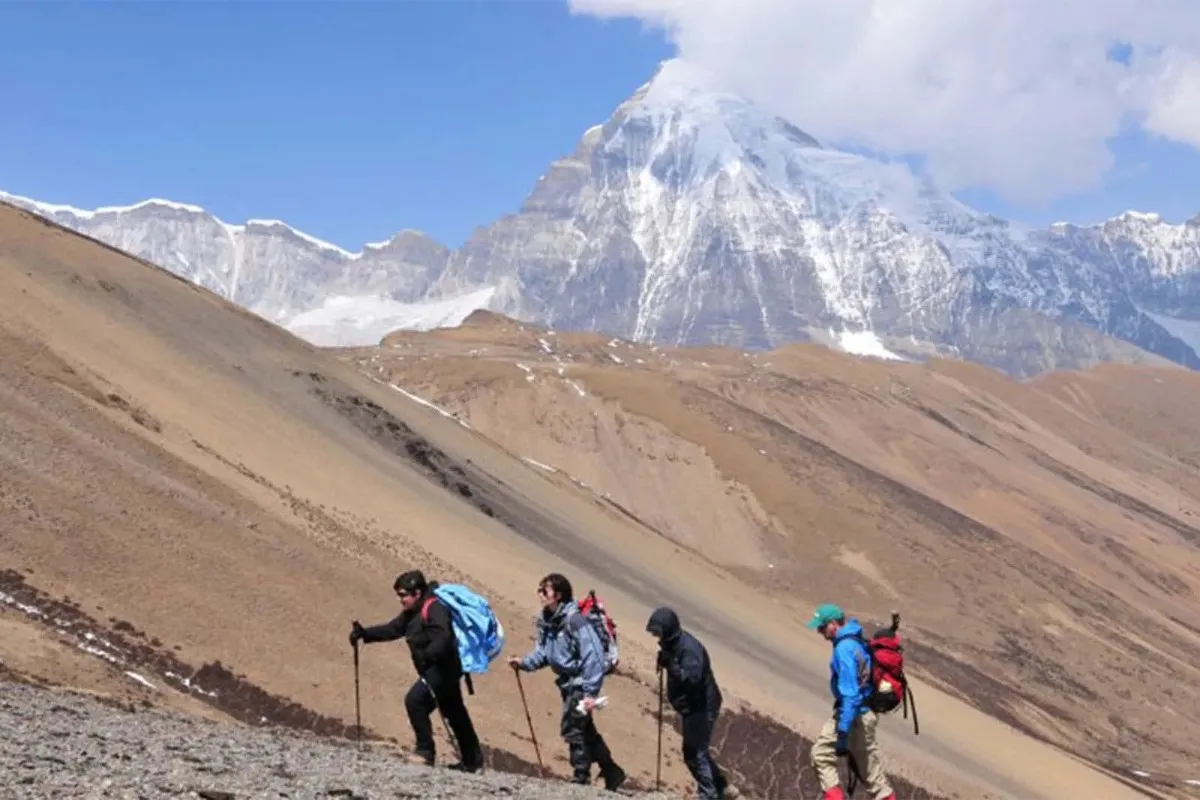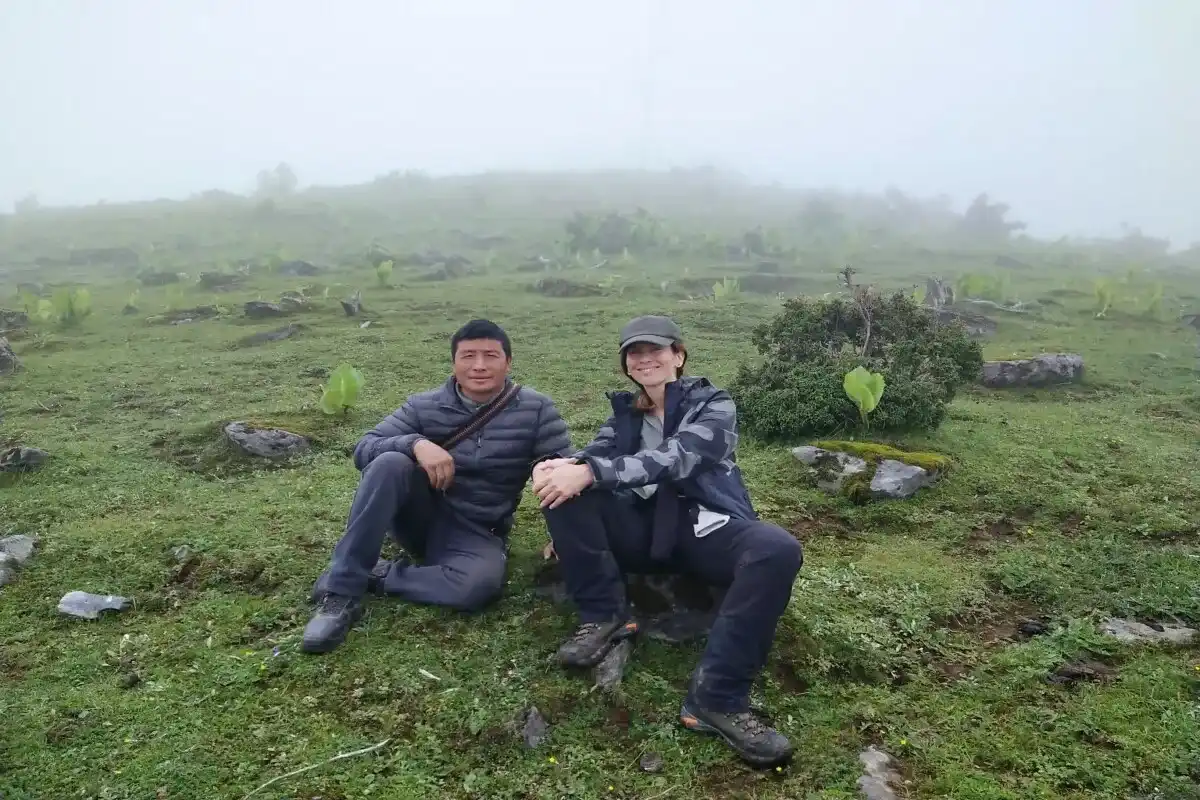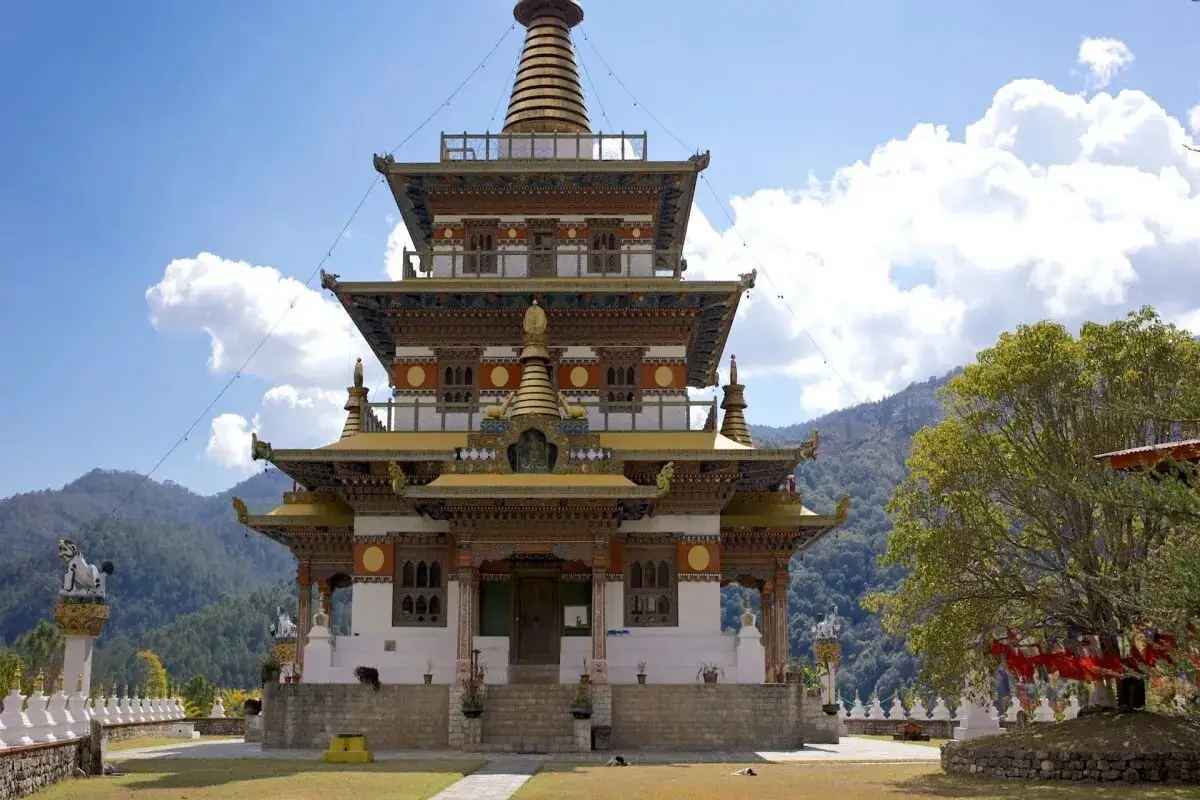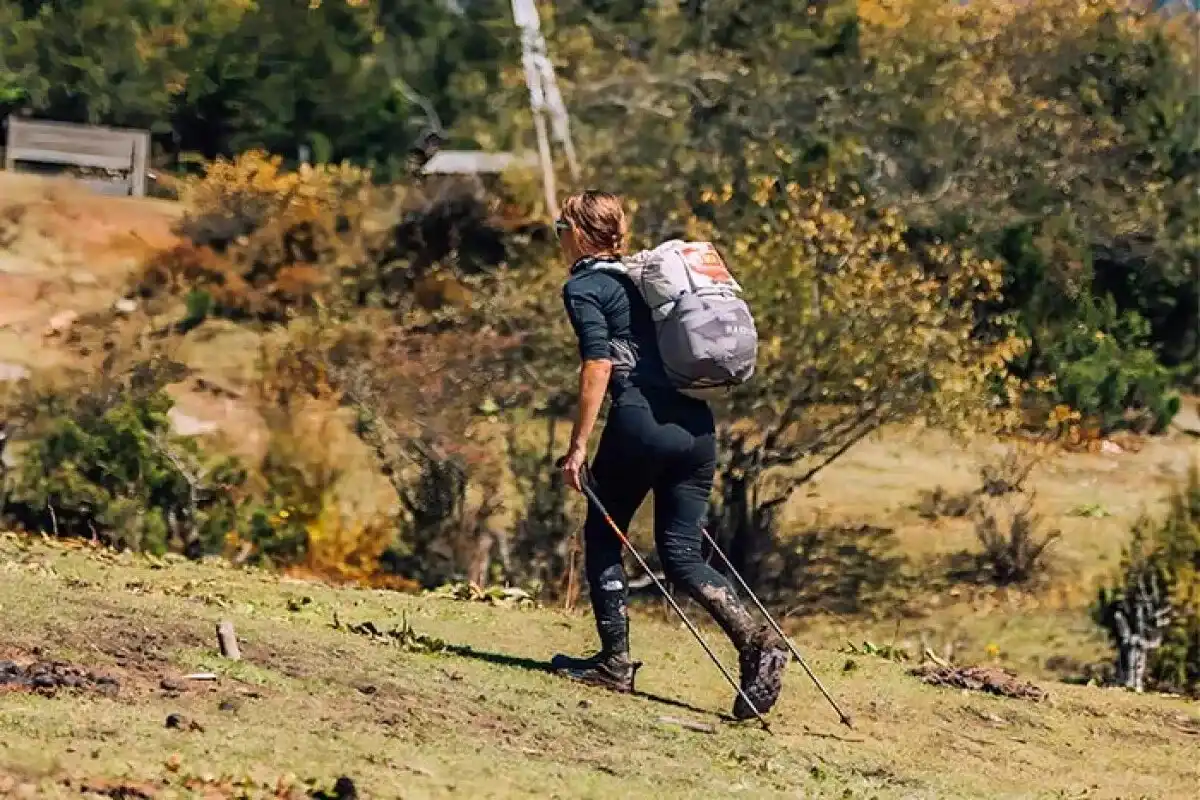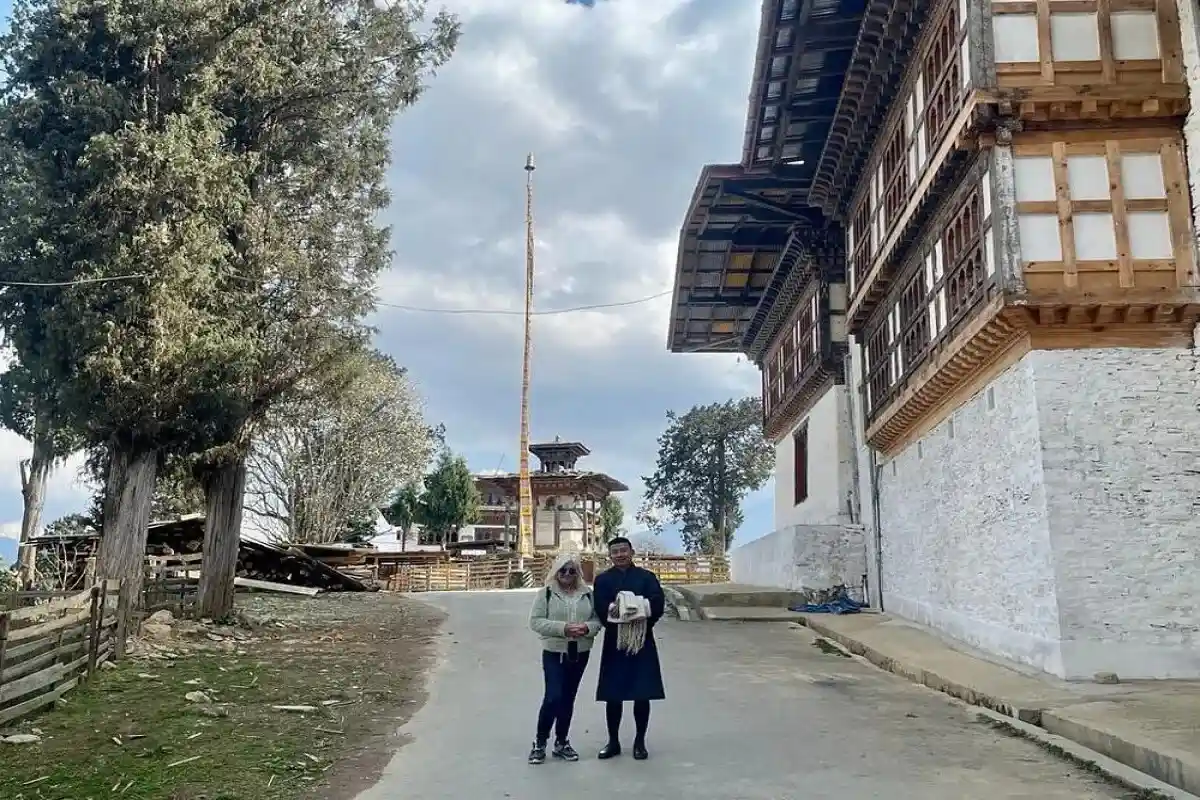Gasa to Punakha Trek - 9 Days
Bhutan is also known as the Land of the Thunder Dragon, and it is a magical Himalayan kingdom where culture, nature, and peace exist in perfect harmony. Gasa to Punakha Trek is a very tranquil and beautiful trek in Bhutan. It is perfect for anyone who loves nature, culture, and peace.
Highlights of the tour
- Soothing Gasa Hot Springs
- Majestic Gasa Dzong
- Enchanting Forest Trails
- Warmth of Remote Villages
- Incredible Himalayan Views
- Peaceful Arrival in Punakha Valley
Trip Overview
This trek journey will last eight days and will take you through the remote and therapeutic hot springs of Gasa to the warm and green valley of Punakha. In your journey, you will go through deep forests, small villages, mountain passes, and rivers, surrounded by fresh air and breathtaking views. The reason why this trek is special is because of its blend of nature and culture. You will be taken to the ancient fortresses, and walk through the rhododendron forests, you will meet kind villagers, and experience the simplicity of Bhutanese life. The hike is not a challenging one, and therefore, physically fit beginners can have a good time. It is an excellent option when you need some refreshing moments and a tranquil destination.
Every single day is different; you can soak in the hot springs, camp under the stars, stand on high ridges, and see snow-covered mountains. It is concluded in Punakha, where you can go sightseeing and have a rest in the hot climate of the Punakha Dzong. Gasa to Punakha Trek is not just a hike but an experience that will touch your soul in one of the most peaceful countries in the world.
Highlights of the Gasa to Punakha Trek
This Gasa to Punakha trek , offers you a chance to explore bhutan in depth. Not only you will get to explore cultural of Bhutan also , you will get to explore the natural beauty along with the remote villages and experience the lifestyle there.
Soothing Gasa Hot Springs
Your journey begins by relaxing in the natural hot springs of Gasa. It is believed that the warm water is therapeutic to the body and the soul. It is an ideal place to unwind and get ready to undertake the adventure, as it is surrounded by nature and fresh air in the mountains. This serene place sets the mood of the days ahead- serene, refreshing, and well connected to the natural beauty of Bhutan.
Majestic Gasa Dzong
The historic Gasa Dzong is a fortress constructed to protect Bhutan many centuries ago, and it is located on top of a hill. It provides breathtaking scenery of the mountains and surrounding valleys. The Dzong is beautiful, and you will get to learn about the history. The visit to this site will give you an insight into the culture of Bhutan and the strong faith that the people of Bhutan have even in the most distant places.
Enchanting Forest Trails
The most enjoyable aspect of the trek is the walk through the unexplored forests of Bhutan. You will see tall pine trees, rhododendrons blooming, and you will hear birds chirping. The calm and the sounds of nature are therapeutic and calming. Each footstep in these forests gives an inner connection with nature.
Warmth of Remote Villages
On the way, you will pass by small villages of Bhutan where people live simple, happy lives. You can explore places such as Yaylakha, you can have an interaction with the locals, learn about their traditions, and learn how they cultivate their land and live in harmony with the environment. The kindness and stories of the villagers will stay with you long after the trek is over.
Incredible Himalayan Views
You will enjoy the stunning views of snow-capped mountains and deep green valleys as you ascend mountain ridges and cross high mountain passes. The air is fresh, the skies tend to be clear, and the silence is powerful. It is a great experience to be in these high locations. It is a time when nature seems so beautiful, and your heart is light and full.
Peaceful Arrival in Punakha Valley
You will then descend to the Punakha Valley, which is green and warm after days spent in the mountains. You can enjoy the landscape of rice paddies, waterways, and houses. It is like stepping into a golden land of peace. The trip is concluded by the magnificent Punakha Dzong, which is one of the most beautiful and spiritual places in Bhutan. Getting here is like coming to the end of a journey of significance- full of mountains and a valley of life.
Why Choose the Gasa to Punakha Trek?
Although Bhutan has numerous trekking tours, the Gasa to Punakha Trek is special because it is filled with nature, culture, and accessibility. It is not that challenging, yet it makes you feel satisfied with a Himalayan adventure. The path is not very busy, and it gives a person a chance to enjoy the landscape and people of Bhutan in a close manner. You will walk through high mountainous regions down to green valleys, through forests, old castles, and hospitable villages. The trek will also make you feel attached to the Bhutanese culture as you visit spiritual and traditional places. In case you want to have a soulful experience of physical activity, cultural experience, and natural healing, the Gasa to Punakha Trek is like an untapped treasure that is ready to be discovered.
Responsible Trekking Tips in Bhutan
Bhutan is a clean and peaceful country that loves nature and culture. As a tourist, it is necessary to trek responsibly. Never leave trash behind, and always carry your trash with you. Avoid plastic bottles as much as possible, and carry a refillable water bottle. Always remain on the designated trails to protect the vegetation and not to get lost. Be respectful of local traditions, dress in a way that is modest, and do not take pictures of people or places of worship without permission. Hire local guides and purchase in the village shops to support the local economy. Do not hurt animals or feed them, and do not touch wild animals. Pitch your tent only in designated and safe areas and be quiet. Where toilets are available, use them, or dig a small hole at a distance that is far away from water sources. Such small efforts make Bhutan clean and beautiful to other people. Responsible trekking is about taking care of nature, respecting the people, and leaving nothing but footprints.
Conclusion
The Gasa to Punakha Trek is a unique experience of a trek in the core of Bhutan. It brings you to peaceful mountain forests and curative hot springs, green valleys, and lovely villages. In the process, you will encounter good people, beautiful scenery, and the Bhutanese culture and nature.
This hike is not excessively hard, which is why it is a perfect one to take both beginner and professional hikers. Every day is a calm and fulfilling one, you will walk in the woods or go camping outside, or take a trip to ancient fortresses.
The best way to end the adventure is by completing the trek at Punakha Dzong, which is one of the most beautiful places in Bhutan. In case you need a peaceful and fulfilling journey with nature, culture, and cozy local impressions, the Gasa to Punakha Trek will remain in your heart forever. It is not just a hike, but it is a journey that will never be forgotten.
This trek journey will last eight days and will take you through the remote and therapeutic hot springs of Gasa to the warm and green valley of Punakha. In your journey, you will go through deep forests, small villages, mountain passes, and rivers, surrounded by fresh air and breathtaking views. The reason why this trek is special is because of its blend of nature and culture. You will be taken to the ancient fortresses, and walk through the rhododendron forests, you will meet kind villagers, and experience the simplicity of Bhutanese life. The hike is not a challenging one, and therefore, physically fit beginners can have a good time. It is an excellent option when you need some refreshing moments and a tranquil destination.
Every single day is different; you can soak in the hot springs, camp under the stars, stand on high ridges, and see snow-covered mountains. It is concluded in Punakha, where you can go sightseeing and have a rest in the hot climate of the Punakha Dzong. Gasa to Punakha Trek is not just a hike but an experience that will touch your soul in one of the most peaceful countries in the world.
Highlights of the Gasa to Punakha Trek
This Gasa to Punakha trek , offers you a chance to explore bhutan in depth. Not only you will get to explore cultural of Bhutan also , you will get to explore the natural beauty along with the remote villages and experience the lifestyle there.
Soothing Gasa Hot Springs
Your journey begins by relaxing in the natural hot springs of Gasa. It is believed that the warm water is therapeutic to the body and the soul. It is an ideal place to unwind and get ready to undertake the adventure, as it is surrounded by nature and fresh air in the mountains. This serene place sets the mood of the days ahead- serene, refreshing, and well connected to the natural beauty of Bhutan.
Majestic Gasa Dzong
The historic Gasa Dzong is a fortress constructed to protect Bhutan many centuries ago, and it is located on top of a hill. It provides breathtaking scenery of the mountains and surrounding valleys. The Dzong is beautiful, and you will get to learn about the history. The visit to this site will give you an insight into the culture of Bhutan and the strong faith that the people of Bhutan have even in the most distant places.
Enchanting Forest Trails
The most enjoyable aspect of the trek is the walk through the unexplored forests of Bhutan. You will see tall pine trees, rhododendrons blooming, and you will hear birds chirping. The calm and the sounds of nature are therapeutic and calming. Each footstep in these forests gives an inner connection with nature.
Warmth of Remote Villages
On the way, you will pass by small villages of Bhutan where people live simple, happy lives. You can explore places such as Yaylakha, you can have an interaction with the locals, learn about their traditions, and learn how they cultivate their land and live in harmony with the environment. The kindness and stories of the villagers will stay with you long after the trek is over.
Incredible Himalayan Views
You will enjoy the stunning views of snow-capped mountains and deep green valleys as you ascend mountain ridges and cross high mountain passes. The air is fresh, the skies tend to be clear, and the silence is powerful. It is a great experience to be in these high locations. It is a time when nature seems so beautiful, and your heart is light and full.
Peaceful Arrival in Punakha Valley
You will then descend to the Punakha Valley, which is green and warm after days spent in the mountains. You can enjoy the landscape of rice paddies, waterways, and houses. It is like stepping into a golden land of peace. The trip is concluded by the magnificent Punakha Dzong, which is one of the most beautiful and spiritual places in Bhutan. Getting here is like coming to the end of a journey of significance- full of mountains and a valley of life.
Why Choose the Gasa to Punakha Trek?
Although Bhutan has numerous trekking tours, the Gasa to Punakha Trek is special because it is filled with nature, culture, and accessibility. It is not that challenging, yet it makes you feel satisfied with a Himalayan adventure. The path is not very busy, and it gives a person a chance to enjoy the landscape and people of Bhutan in a close manner. You will walk through high mountainous regions down to green valleys, through forests, old castles, and hospitable villages. The trek will also make you feel attached to the Bhutanese culture as you visit spiritual and traditional places. In case you want to have a soulful experience of physical activity, cultural experience, and natural healing, the Gasa to Punakha Trek is like an untapped treasure that is ready to be discovered.
Responsible Trekking Tips in Bhutan
Bhutan is a clean and peaceful country that loves nature and culture. As a tourist, it is necessary to trek responsibly. Never leave trash behind, and always carry your trash with you. Avoid plastic bottles as much as possible, and carry a refillable water bottle. Always remain on the designated trails to protect the vegetation and not to get lost. Be respectful of local traditions, dress in a way that is modest, and do not take pictures of people or places of worship without permission. Hire local guides and purchase in the village shops to support the local economy. Do not hurt animals or feed them, and do not touch wild animals. Pitch your tent only in designated and safe areas and be quiet. Where toilets are available, use them, or dig a small hole at a distance that is far away from water sources. Such small efforts make Bhutan clean and beautiful to other people. Responsible trekking is about taking care of nature, respecting the people, and leaving nothing but footprints.
Conclusion
The Gasa to Punakha Trek is a unique experience of a trek in the core of Bhutan. It brings you to peaceful mountain forests and curative hot springs, green valleys, and lovely villages. In the process, you will encounter good people, beautiful scenery, and the Bhutanese culture and nature.
This hike is not excessively hard, which is why it is a perfect one to take both beginner and professional hikers. Every day is a calm and fulfilling one, you will walk in the woods or go camping outside, or take a trip to ancient fortresses.
The best way to end the adventure is by completing the trek at Punakha Dzong, which is one of the most beautiful places in Bhutan. In case you need a peaceful and fulfilling journey with nature, culture, and cozy local impressions, the Gasa to Punakha Trek will remain in your heart forever. It is not just a hike, but it is a journey that will never be forgotten.
Short Itinerary
Drive to Gasa via Thimphu or Punakha and relax at Gasa Hot Springs
Visit Gasa Dzong and begin trek to Forest Camp through serene woodlands
Trek through pristine nature to Yaylakha Village and interact with locals
Ascend to High Forest Camp beneath the mountain pass
Cross the high pass with panoramic views and descend to Lower Camp
Gentle trek to village camp with local encounters and cultural immersion
Descend through lush farmlands to Punakha Valley and riverside camping
Trek to Punakha town, visit Punakha Dzong and drive to Paro for overnight stay
Departure from Paro Airport with cherished memories
Gasa to Punakha Trek Itinerary
Your trip starts with a beautiful drive to Gasa, either through Punakha or Thimphu and passing through forests, rivers, and villages. After arriving at Gasa, take a break at the hot springs, which have been known to have medicinal powers. The hot waters relax your body and your mind. It is the best way of preparing for the adventure ahead. Sleep in a comfortable guesthouse or camp by the springs, in the middle of nature and the sounds of the forest.
Begin the day with a visit to the beautiful Gasa Dzong, an old fortress that stands on a hill. Once you have enjoyed the scenery, start hiking into peaceful forests, which are full of pine and oak trees. The path is smooth, and sometimes it is uphill. You will get to hear the chirping sound of birds and breathe the fresh air of the mountains. Once you have walked for a few hours, you will come to a clearing in a forest, where you will make a camp and spend the night in the middle of nature and under the stars.
Today, you will get deeper into the unexplored nature of Bhutan. You will pass a stream full of bubbles, wildflowers of every color, and forest trails that are silent. A couple of hours later, you will reach Yaylakha, the remote village where the traditional life of Bhutanese people still goes on as it has been doing for centuries. The local people may greet you with big smiles and simple food. Spend some time resting and get to know their way of life. Camp at the edge, and have the most beautiful views of the surrounding hills and night skies filled with stars.
Begin an uphill, slow walk through a dense forest of rhododendron and spruce trees. It is a cool, shady path, and the trees are shaded by trees, and the birds are singing. When you go even higher, you can observe snow mountains in the distance. It becomes colder, and the surrounding plants begin to change. In the afternoon, you will get to a camp below a high mountain pass. Pitch your tent in this quiet spot, among rocks and the soft glow of the evening sky.
It is one of the most exciting days. You will begin early in crossing the highest mountain pass. The scenery is an amazing panorama of mountains, valleys, and endless sky. Once you have enjoyed the view, start down the open meadows and into the thicker forests. It is warmer going down. In the evening, you will arrive at a lower-altitude camp where you will have time to relax your legs and have a hot, hearty dinner.
The walk is easier today, a little up and down in forest tracks and on step-like land. Along the way, you will get to observe the traditional Bhutanese houses and the friendly villagers working in their fields. It is a wonderful day to communicate with local people and understand how they live. You will be camping somewhere between one of the villages. It is a cozy and nice feeling like home.
As you go down the hill, the landscape gradually alters. The dense forests turn into open fields, orange trees, and rice farms. It is warmer, and everything is green and looking alive. You will be able to see farmhouses, small temples, and the flowing rivers, which will show that you are near Punakha. The trail is smooth and pretty with beautiful scenery everywhere. You will camp at the bottom of the valley, and you will be excited to reach Punakha the next day.
This is the final part of your trip. You will walk through peaceful paths next to a river to get to the Punakha town. The trek is concluded by a visit to the Punakha Dzong, which is one of the most special and holy buildings of Bhutan. It is located at the point where two rivers converge, and it glows with golden roofing and beautiful wood carvings. Stop and look around, reflect on your journey, and feel proud. You have completed an unforgettable trek through the mountains to the valley of Punakha. After a visit to Punakha Dzong, you will head from Punakha to Paro. After some hours of driving, you will reach Paro. You can rest well in Paro and enjoy your last day of the trip.
Know Before You Travel
-
Best season for the trip:
Gasa to Punakha Trek is best to be done in spring (March to May) and autumn (September to November). The weather in these seasons is mostly clear, and the views of the mountains are beautiful during these months. In the Spring season, the forests are in flower, and the weather is cool and pleasant to walk in, with colourful flowers such as rhododendrons. Autumn is equally beautiful, with golden leaves, clear air, and great visibility of Himalayan peaks.
They also have less rainy seasons, which makes the trails safe and enjoyable. To have the best experience, therefore, trek in spring or autumn when nature is at its best and the weather is ideal for trekking.
FAQs for Gasa to Punakha Trek
The best time is from Spring (March to May) and Autumn (September to November). The weather is perfect, the temperature is great, and the views are lovely. Try to avoid the wet summer months and the cold winter for the best experience.
Yes, it is a moderate trek, so in case you are a healthy person and you are fond of walking a couple of hours per day, you can do it. It is a bit steep in some sections, but otherwise it is an easy trail that is not too difficult.
Yes, in Bhutan, every trek must be organized by our licensed guide who works with an officially registered tour company. It is not possible to trek without permission and alone. So, we are here to help you make your trip successful.
You will eat very simple, local Bhutanese food such as red rice, vegetables, cheese, and, on occasion, meat. Your guides will also help with meals, and you can inform them of any special dietary requirements.
This trek hikes to moderate altitudes and therefore serious altitude sickness is unlikely. All you need to do is to go at a slow pace, drink lots of water, and follow your guide. Do not hesitate to tell them when you are feeling unwell.
Pack warm clothing, comfortable walking shoes, rain gear, a hat, sunscreen, and a water bottle. Layers are the best because the weather could change.
You need a visa and all necessary permits for your trip. These documents can not be received on the day of your arrival, so they must be processed before coming here. After you book a trip with us, we will manage these papers for you. Your Bhutan visa is arranged by Orrog as part of the package.
The main way to come to Bhutan is through Paro International Airport, which is well-connected to cities like Bangkok, Delhi, Kathmandu, and Singapore. Most people arrive by air, but if you plan to come via road, you can enter through Phuentsholing, located on the southern border with India, which is the most commonly used entry point.
It is recommended to apply for the visa at least 20 days before your planned departure date so that there is enough time for processing your Bhutan visa, finalizing your itinerary, and arranging your guides and transportation. Although visa processing itself is relatively fast once payment is received, early preparation helps avoid delays and ensures availability, especially during peak seasons (spring and autumn).
You don’t require a passport-size photo for the visa, but it is wise to carry at least 2–4 recent passport-sized photographs during your trip. These may be needed for local permits, registration, or when applying for a local SIM card upon arrival in Bhutan.
Yes, you can lengthen your stay in Bhutan either before or after your trip. Bhutan’s tourism model requires visitors to pay a Sustainable Development Fee (SDF) and a daily package cost, so any extra days will involve additional charges. Extensions are a great opportunity to explore cultural sites in Paro, Thimphu, or even add another short trip or day hike.
Yes, Bhutan requires full tour payment in advance before your visa can be processed and issued. The government of Bhutan regulates this policy to ensure that all travel arrangements are confirmed through a licensed Bhutanese tour operator. We are a licensed tour operator that ensures you have everything you need for a trouble-free trip.
Any personal expenses are not covered in the package like:
- Tips for your guide and other staff
- Bottled drinks and snacks(personal expense)
- Souvenirs or local crafts
Credit cards are easily accepted in major cities like Paro and Thimphu. But in remote areas, you may not have access to a card or an ATM. So, it is best to carry some cash before heading for the trip.
Tipping is not mandatory, but it is a widely appreciated gesture and a customary way to show gratitude for good service. The tipping guideline would be to give USD 5-10 per day as a tip for the guides and other staff.
Paro International Airport is the only international airport in Bhutan. It is well connected by flights from cities like Bangkok, Delhi, Kathmandu, and Singapore.
Yes, airport pick-up and drop-off are included in the package. We will have your guide and driver meet you at the airport and transport you to your hotel.
While Bhutan's roads are mostly paved, some parts are narrow, winding, and occasionally affected by weather. However, we ensure your travel is safe, well-maintained, and driven by an experienced professional throughout the journey.
The Bhutanese Ngultrum is used in Bhutan. All local transactions during the trip will be in BTN.
US Dollars (USD) are generally accepted at larger hotels, souvenir shops, and tour operators, particularly in Paro and Thimphu. However, it’s advisable to convert your currency to BTN for general purchases in rural areas. Other currencies like the Euro or the Pound are not commonly accepted directly.
No, credit or debit cards are not accepted on the trip, as it takes you through remote regions with no banking or electronic payment access. All trip-related payments like accommodation, meals, permits, etc, are paid in advance.
You can exchange foreign currency at the Paro International Airport, at banks, or through licensed money changers in cities like Thimphu and Paro. It's best to exchange enough cash before heading out on the trip.
The national language is Dzongkha, but many Bhutanese also speak English. If you speak English and are worried about communicating with the local people, you will have your guide as a translator
Yes, all licensed tour guides in Bhutan are required to speak fluent English. Many are also trained in other languages such as German, Japanese, or French. Communication during the trip will be smooth and clear in English.
Most signboards, tourist maps, and information brochures are written in English, especially in tourist destinations like Paro, Thimphu, and trailheads. Directional signs along routes are often labeled in both Dzongkha and English.
No, learning Dzongkha is not at all needed for the trip, but knowing a few basic words like "Kuzu zangpo la" (Hello) or "Kadrinche la" (Thank you) is a good way to interact with the locals.
Language barriers are minimal, as your guide will handle all communication with locals and support staff. Your guide will translate for you during your interaction with the locals.
To greet people, you can greet with locals “Kuzu zangpo la” (Hello) by performing a slight bow. Most common greetings include physical greetings, such as shaking hands less visible, especially in rural areas.
Yes, but remember to seek permission, especially when taking photos of monks, locals, or temples. Please note that clicking photos is not allowed at most religious sites.
Visitors should dress modestly and respectfully. This means:
- Covering shoulders and knees
- Removing hats and sunglasses
- Not wearing shorts or sleeveless tops
This applies to both men and women.
Yes, Bhutanese society is deeply rooted in Buddhism and tradition. Here are some key taboos:
- Do not point your feet at people or sacred objects
- Never touch anyone on the head, as it is considered sacred
- Walk clockwise around temples, stupas, and religious monuments
- Avoid public displays of affection
While gifts are not expected, they may be accepted graciously if given with respect. It is advisable to consult with the guide before giving out anything.
Bhutan typically uses Type C, Type D, and Type G electrical outlets. Standard safe voltage is 230V and frequency is 50Hz; therefore, ensure that your equipment is compatible with this voltage.
Indeed, it is highly advised to take along a universal travel adapter, particularly one to fit a variety of types of plugs, because plugs can be different in a hotel or a guesthouse.
No, it's not advisable to use power-consuming appliances like hairdryers during the trip due to very less access to electricity and the risk of overloading small power sources in rural lodges or camps.
Charging facilities are limited during the travel days, particularly once you leave Paro. It’s a good idea to bring a high-capacity power bank to keep essential electronics like cameras or phones powered.
Power supply in towns like Paro and Thimphu is generally stable, but occasional power cuts do happen, especially during storms or in rural areas. It's wise to charge your devices whenever electricity is available.
Bhutan follows Bhutan Time (BTT), which is UTC/GMT +6 hours. This time zone remains consistent throughout the year.
No, Bhutan does not observe daylight saving time. The country maintains the same time year-round.
Bhutan is 30 minutes ahead of India. For example, 12:00 PM in India is 12:30 PM in Bhutan.
Yes, snow is quite likely, especially at higher elevations, which are above 4,800 meters. If you trek during late autumn (October–November) or early spring (March–April), you may encounter snowfall. During the peak of spring (April–May) and autumn (September–early October), trails are usually clear, although sudden weather changes in the mountains can still bring unexpected snow showers. You should always be prepared for cold conditions and potential snowfall, regardless of the season.
No, Treks are not accessible throughout the year. The trail is generally closed during the winter(December- February) due to heavy snowfall that makes high mountain passes impassable and increases the risk of avalanches and extreme cold.
Since the weather can be unpredictable and temperatures can vary drastically, layered clothing is essential. You should pack:
- Base layers (thermal tops and bottoms)
- Insulating layers like fleece or down jackets
- Waterproof and windproof outer layers
- Warm hats, gloves, and neck gaiters for freezing conditions
- Moisture-wicking socks and weatherproof trekking boots
The weather is clear with mild daytime temperatures during spring and autumn. But you will be travelling in high altitudes, so it is necessary to carry enough clothing because you will encounter lower temperatures. The nights are freezing cold at high altitudes. So, pack accordingly.
The Jomolhari Trek is classified as moderate to strenuous, basically due to its location, the long trail, and several days of camping. The track, although not tough, is more suited to people who have earlier hiking or trekking experience. Beginners with good fitness and determination can still complete the trek, but we recommend undertaking some pre-trip training, such as having a long walk or doing some cardio exercises.
This trip is mainly for people aged between 12 and 65. But if you are physically fit and have the willpower to complete this trek, you can complete this trek because we will be there to help you in case of any problem.
A Medical certificate is not mandatory, but a health check-up is advised. Since the trek reaches altitudes over 4,800 meters (15,750 feet), you can have a normal checkup before the trek to make sure that you have no ongoing issues.
Yes, your children can join the trek if they are in good physical condition, which requires walking for a few hours every day. They should have parental guidance during the trek.
Yes, senior citizens can participate, given that they are fit to complete this trek. A visit to the Doctor is strongly advised, and seniors should engage in pre-trek training to improve stamina and cardiovascular health.
During this Trek, you will stay in tented camps at remote, scenic campsites along the trail. These camps are fully supported and managed by us. Before and after the trek, you will stay in comfortable hotels or guesthouses in Paro and Thimphu. All accommodations are arranged by us as part of your package.
Yes, all campsites are carefully chosen, keeping safety, cleanliness, and hygiene in mind. Orrog follows strict sanitation practices, including setting up toilet tents, safe waste disposal, and clean food preparation areas. You’ll also be accompanied by well-trained staff to ensure your safety during the trip.
Yes, we provide a high-quality sleeping bag in the package, which is suitable for sub-zero temperatures of the high-altitude regions. However, you can bring your sleeping bag if you prefer additional comfort or hygiene.
Yes, hot water for drinking is available at camps, but not hot water for showers. You can carry biodegradable wet wipes for convenience.
Each campsite is equipped with portable toilet tents or simple pit latrines, maintained by the support team to ensure cleanliness and privacy. While they are basic, they are safe, hygienic, and environmentally conscious. It is advisable to carry your toilet paper, hand sanitizer, and eco-friendly toiletries to maintain hygiene during the trek.
If you experience symptoms such as headache, nausea, dizziness, or fatigue, your guide will have you rest, hydrate, and monitor your condition closely. If symptoms worsen, you will be taken to a lower altitude immediately, which is the most effective treatment. All treks are designed with gradual altitude gain and acclimatization days to minimize the risk.
Yes, emergency helicopter evacuation is available in Bhutan and can be arranged in serious cases such as severe altitude sickness or injury. However, helicopter rescue is costly and not included in standard trek packages, so having travel insurance that covers emergency evacuation is mandatory. Guides and tour operators are trained to handle emergencies efficiently and will contact authorities for evacuation if needed.
This trek is moderate to tough with 6–8 hours of walking per day across rugged terrain and steep trails. The altitude, length, and remote conditions require good physical fitness and preparation.
Yes, emergency helicopter evacuation is available in Bhutan and can be arranged in serious cases such as severe altitude sickness or injury. However, helicopter rescue is costly and not included in standard trek packages, so having travel insurance that covers emergency evacuation is mandatory. Guides and tour operators are trained to handle emergencies efficiently and will contact authorities for evacuation if needed.
Yes, travel insurance is mandatory for all international travelers visiting Bhutan, especially for those trekking at high altitudes. Your insurance must cover:
- Emergency medical treatment
- High-altitude trekking (above 4,000 meters)
- Helicopter evacuation and return to the home country
- Trip cancellation or delay
Proof of insurance may be requested before your visa is processed. Make sure to read your policy details carefully or consult with your insurance provider before travel.
Yes, travel insurance is mandatory for this trek. Your policy must include coverage for high-altitude trekking (above 4,000 meters), medical emergencies, and helicopter evacuation, as these services can be very costly in remote Bhutanese terrain. Proof of insurance may be required by your tour operator before confirming the trek.
Mobile network coverage is extremely limited along the Trek. While you may get occasional signal in some lower-altitude areas or villages, most of the trail is out of range, especially near the high passes and campsites. It’s best to inform family and friends that you may be offline for several days.
Charging facilities are not available on the trail since the trek passes through remote and non-electrified areas. It is strongly recommended to bring a high-capacity power bank or a solar charger to power essential devices like phones or cameras during the journey.
Yes, you should bring personal gear such as trekking boots, warm and waterproof clothing, gloves, hats, and a sleeping bag. The other necessary items will be managed by us.
Meals are prepared fresh daily by the trek support team and typically include Bhutanese and Tibetan-style dishes like rice, curries, noodles, soups, vegetables, and occasional meat. Tea, coffee, and snacks are also provided. If you have diet restrictions (vegetarian, vegan, gluten-free, etc.), inform your tour operator in advance so arrangements can be made.
Trekking in Bhutan follows strict environmental protocols, including the “Leave No Trace” principle. All trash is collected and carried out by the support team. Trekkers are expected to avoid littering and carry personal non-biodegradable waste, such as snack wrappers or batteries, back to base.
Yes, safe drinking water is provided each day. You are also encouraged to bring a refillable water bottle and, optionally, water purification tablets or a filtration bottle for additional safety and convenience.
You can prevent Altitude sickness by following these tips:
- Ascend gradually and allow time for acclimatization
- Drink plenty of fluids, preferably water and warm drinks
- Avoid alcohol and caffeine
- Eat light but frequent meals
- Communicate with your guide immediately if you feel unwell
Common symptoms include:
- Headache
- Nausea or vomiting
- Dizziness or light-headedness
- Shortness of breath
- Loss of appetite
- Fatigue or difficulty sleeping
Occasionally, you might meet villagers selling handmade items like yak wool scarves or woven baskets near campsites or small settlements. These are authentic and support local communities.
Only some larger shops in cities like Paro and Thimphu accept credit cards. The remote areas might not have a card payment option, so we suggest that you carry some cash.
Yes, souvenirs can be bought in Paro or Thimphu before or after the trip.
Some popular souvenirs include hand-woven textiles (kira and gho fabric), prayer flags, thangka (religious scroll) paintings, handmade paper products, traditional masks, and Buddhist artifacts.
You can do some gentle bargaining in local street markets. However, in government-run shops and fixed-price stores, prices are usually non-negotiable.
Yes, it is highly recommended to inform friends and family before the trip that you will be offline for several days, so they are not concerned by the lack of communication.
B-Mobile (by Bhutan Telecom) and TashiCell are the two main service providers. B-Mobile tends to have better coverage in rural and mountainous areas.
Yes, you can easily purchase a SIM card upon arrival in Bhutan. We will assist you with the process, and you'll need a passport copy and a passport-sized photo.
No, internet access is not available during the trip. However, Wi-Fi is available in hotels in Paro and Thimphu before and after the trip.
Reviews & Ratings
-
Guarantee -
Thimphu,Bhutan -
975+17160228
Ready to Explore Bhutan?
Start your journey today and discover the magic of Bhutan with our expert guides and carefully crafted tours.
Book This Trip
-
No booking or credit card fees -
Best price guarantee -
Full customize trip
Ask a Question
Feel free to ask us anything about this tour. A travel expert will then get back to you as soon as possible
Ready to Explore Bhutan?
Start your journey today and discover the magic of Bhutan with our expert guides and carefully crafted tours.

